The Leica D-Lux 5 Camera Review
By Steve Huff
One of my Top Picks! * Buy Here*
Hello to all! It’s Tuesday and as promised I am here with the Leica D-Lux 5 Camera review. I was lucky enough to get a hold of a review sample early so I have been shooting with it for a few days straight and I have been absolutely LOVING it. Many of you have been e-mailing me asking me if this camera, the D-Lux 5, is an improvement over the D-Lux 4. Well, good news is yes, it is! Bad news is that it will cost you if you want to upgrade! (but it is a step up in MANY ways). The D-Lux 5 is a little powerhouse of a camera and one that can go with you anywhere and give you fantastic results. It is amazingly versatile, and the image quality is superb for being a small sensor camera.
In this review I will go over the specs, the features, the good things, the bad things and I will also show a ton of image samples as well as offer a full full size out of camera files. So sit back, relax and enjoy this review of the Leica D-Lux 5! If you want to see my popular review of the previous D-Lux 4, you can do so by clicking HERE.
But Isnt This A Panasonic LX-5 In Disguise?
Many of you reading this will trash me and this review if I say ANYTHING positive about this camera. Why? Because there are many out there who bash Leica for “rebranding” Panasonic cameras with their body shell and logo and selling it at a $300 premium. I will say right now that if you want to save $300 and you want the same camera then you can easily buy the Panasonic LX5 RIGHT NOW for $499. You will get a one year warranty, you will get a different body style (with grip) and you will get lower end software. The Leica D-Lux 5 will give you different firmware, different body style and looks, a 3 year warranty, and better software. I am hearing Lightroom will be included, which is a GOOD thing.
So to those who will come here and comment and bash the D-Lux 5 because it is $300 more, know that you do indeed get MORE with the camera as well as the joy of owning a Leica 🙂 I think the Panasonic looks great as well and the grip may be a benefit when holding the camera. But whichever you choose, you will get the same terrific image quality. Just choose based on your budget and desires 🙂 The LX-5 is selling like hotcakes and I expect the D-Lux 5 to also sell VERY well.
 Brandon with the D-Lux 5 – f/2.5 – 47mm – converted to B&W with Silver Efex Pro – Click image for larger version.
Brandon with the D-Lux 5 – f/2.5 – 47mm – converted to B&W with Silver Efex Pro – Click image for larger version.
The Features of the Leica D-Lux 5
The feature list below was taken from the features of the Panasonic LX-5 but again, these are the same cameras, so the features are the same.
Large 1/1.63″ 10.1-Megapixel High Sensitivity CCD
The CCD produces high resolution, noise-less images even in high sensitivity recording and richly reproduced gradation in highly contrasted situations with the exquisitely wide dynamic range. Taking advantage of the high sensitivity CCD and the brightness of the lens, minimum illumination is as low as 3 lux in movie recording. Also, the maximum setting is ISO 12800 enabling shooting in extremely dark places.
Dynamic Range
The expanded dynamic range is made possible by the improvement of on-tip-lens design with larger light concentration and VCCD expansion while deepening the photo diode to manage richer signal more effectively.
24-90mm f/2.0-3.3 Ultra-Wide-angle Leica Lens
The lens unit consists of 10 elements in 9 groups with 3 aspherical lenses with 5 aspherical surfaces. Minimal distortion, high resolution, minimum artifacts such as chromatic aberrations, ghosting and flaring are the proof of uncompromising imaging made possible by a f/2.0 24mm ultra wide-angle Leica DC Vario- Summicron lens.
• The 24mm ultra wide-angle lens is rare on a compact camera. It gives you a wider range of composition possibilities. The super-high-quality Leica DC Vario- Summicron lens minimizes distortion at the wide end, so you can get stunning, true-to-life images with outstanding resolution and detail. The DMC-LX5 captures approx. 213% larger viewing space compared to that of normal 35mm cameras, and even approx. 136% larger compared to that of 28mm wide-angle lens.
• The fully open f/2.0 aperture lends a beautiful soft focus to photos with a shallow depth of field. It is especially effective for macro shots of flowers, insects, or intricate objects. This setting is also ideal for dimly lit scenes that require greater exposure, such as deep, natural forests, dimly lit historic buildings, and artwork displays. In addition, the DMC-LX5 lets you get as close as 1cm to your subject. The fully open f/3.3 aperture combines with the 90mm telephoto end of the zoom produces optimal portraits. The high resolution and excellent contrast also express fine details, with natural gradation for smoother complexions.
Digital Zoom
Thanks to intelligent resolution technology, the intelligent zoom is available which extends the zoom ratio by approx. 1.3x maintaining the picture quality when using the digital zoom. This means the 3.8x optical can virtually extend to 5.0x equivalent. Furthermore, the extra optical zoom function that extends zoom power to 6.7x by using the center part of the large CCD to bring subjects even closer.
Step Zoom
The Step Zoom function, allows you to set the zoom to 24mm, 28mm, 35mm, 70mm or 90mm via the menu. This is like changing fixed focal length lenses on a D-SLR. Max. 800mm is available if combining the Intelligent Zoom and digital zoom.
MEGA O.I.S. with Intelligent ISO Control
Everyone has had an experience of taking a photo at night and hoping to capture all the memories and beauty, only to be disappointed at the poor result. Panasonic has worked on the low-frequency vibration hand-shake component, which is physically generated when pressing the shutter button or when shooting at night with a slow shutter speed. The POWER O.I.S. (Optical Image Stabilizer) nearly doubles the hand-shake correction power of conventional MEGA O.I.S. You get bright photos without blurring even from handheld shooting at slow shutter speeds.
Multi Aspect Ratios
Conventional cameras generally use almost the entire CCD area when recording an image. The D-LUX 5, however, employs a 1/1.63-inch CCD with a total resolution of 11.3 megapixel. Using only about a 10.1 megapixel area of this large CCD makes it possible to give three aspect ratios – 16:9, 3:2, and 4:3 – the same angle of view with lens settings from 24mm to 90mm (35mm camera equivalent). And rather than digitally producing “simulated” images, the DMC-LX5 captures the actual, real-life image for each one of the aspect ratios at the ultra-wide 24mm setting.
Aspect Switch, Aspect Bracket & 1:1
The aspect ratio can be changed directly with the aspect switch on the lens barrel from 4:3, 3:2, 16:9 and 1:1. The 1:1 aspect ratio is a unique square frame that adds to your possibilities. Aspect Bracket lets the camera take an image in all aspect ratios simultaneously, so you can choose the best one after shooting.
Venus Engine FHD
For the image processing, the DMC-LX5 features the Venus Engine FHD provides higher-speed, higher-performance while compiling the intelligent resolution technology. It enables the recording of beautiful photos and high-definition movies with higher quality signal processing. The triple CPUs in this imaging engine dramatically speed up processing while achieving exceptional noise reduction performance. The Venus Engine FHD’s excellent energy efficiency supports long-time AVCHD Lite movie recording, and allows the output of both images and sounds via HDMI.
Sonic Speed AF
The Sonic Speed AF system in the DMC-LX5 includes a higher-speed actuator, optimized algorithms and parallel software processing. The result is fast and accurate AF performance. You can quickly get moving subjects in focus, such as when you’re shooting sports scenes.
Fast Start-up & Short Release Time
The parallel processing of software resulted in ultra high-speed start-up and the shutter release time lag is as short as approx. 0.007 second, making it easy to capture sudden, spur-of-the-moment photo opportunities.
Intelligent Resolution
The advanced image processing technology “Intelligent Resolution*” is incorporated in the Venus Engine FHD for the D-LUX 5. With the Intelligent Resolution technology, 3 areas – outlines, detailed texture areas and soft gradation areas – are automatically detected and optimum signal processes are performed to each area. Apart from the uniform enhancement of sharpness, the innovative technology of Intelligent Resolution precisely performs signal processing pixel by pixel in the most effective way for it. As a result, images are naturally clear and crisp in both photo and movie recording.
High Sensitivity – Low Noise
The graininess that results from picture noise and the flatness that sometimes comes with noise reduction measures are major concerns when shooting at high sensitivity levels. The Intelligent Resolution minimizes noise to produce sharp, clear images.
Extended Battery Life
The energy-saving Venus Engine FHD image processing engine and the efficient, rechargeable lithium-ion battery work together to extend the shooting time. This lets users take approx. 400 shots on a single battery charge.
RAW Format
You can get original image data, recording the image directly from the sensor without any image processing. nary color separation performance.
Built-in Flash
Select the flash synchronization you want from 1st Curtain Sync. or 2nd Curtain Sync. This is effective for capturing nightscapes with a natural flow of light. You can adjust the intensity within a range of +/-EV 2 in 1/3 EV steps.
3.0″ 460,000-dot Intelligent LCD
The camera is equipped with a 3.0″, 460,000-dot Intelligent LCD with super high resolution and a wide viewing angle. The big screen reflects fine details, making it easy to check the focus before shooting. It also serves as a small photo and video viewer, allowing the user and friends to enjoy viewing the still and motion images together. Plus, adopting the High CRI (Color Rendering Index) LED backlight realizes vivid, impressive color reproduction true to the memory color that your eyes remember. The Intelligent LCD function automatically adjusts the brightness in 11 steps according to the shooting conditions. At the highest of these 11 steps, the LCD backlight becomes approx. 1.4 times brighter than normal. In addition, the AR (anti-reflective) coating LCD minimizes glare and provides clear images, for high visibility even in outdoor brightness.
Intelligent Auto
Intelligent Exposure
Auto Bracketing
Scene Modes
Manual Functions
Manual functions are the key to taking highly controlled and distinctive photos. Aperture-priority Mode lets you open the aperture up wide for stunning portraits with softly focused backgrounds. Shutter-priority Mode makes it possible to express the dynamic power of a flowing stream by slowing down the shutter speed. And Manual Exposure Mode gives you total control of special shots, allowing you to achieve a higher level of photographic beauty.
Exposure Compensation
Function Button
You can allocate frequently used functions to the Function button. Functions that normally have to be selected from a menu or switched can be assigned to this button for faster, easier operation.
Film Mode
The same way photographers select different films for their distinctive coloring and contrast, you can manually choose from 6 color types and 3 monochrome types - even when shooting movies. When shooting in black and white, the contrast, sharpness and noise reduction for each mode parameter can be customized in five steps and stored in memory. The same is true when shooting in color, with the addition of the saturation adjustment. You can make a total of 4,125 settings, and you can get the exact image you want.
ISO Sensitivity
You can set the ISO sensitivity to Auto, Intelligent ISO, 80, 100, 200, 400, 800, 1600, 3200, 6400 or 12800 from the newly adapted ISO Button. When the ISO sensitivity step is set to 1/3 EV, the number of ISO sensitivity setting options increases, allowing you to make fine adjustments and achieve the level of image quality you want.
Consecutive Shooting
The 5 lets you snap off consecutive shots at approx. 2.5 frames per second even in RAW format. You can take a series of shots, then choose the one you like the best and delete the rest. You can also select High-speed burst mode or flash burst mode from Scene Mode.
Focus Switch
The focus switch on the lens barrel lets you quickly change the focus mode between AF, AF-Macro or MF. The focus button helps to achieve finer focusing during both shooting and playback. During AF operation, it serves to activate the variable AF area, and during MF operation, it changes to a handy One-shot AF to provide initial focusing. During playback, this convenient and important function gives you one-touch zoom playback of subjects in focus.
Variable AF Area
You can select the AF setting from Face AF, AF Tracking, Multi-AF (23-area) or 1-area AF. With the 1-area AF, the position of the AF area can be freely moved. This is convenient when you want to frame a shot for a special effect, like focusing on a subject at the very edge of the frame. The AF frame size can also be selected from among Spot, Normal, L, and XL.
Continuous & Quick Auto Focus
AF/AE Lock Button
Manual Focus
Macro
The 5 lets you get as close as 1cm to your subject. When the focus switch on the lens barrel is set to AF-Macro, or when the iA (Intelligent Auto) Mode is selected, Macro Mode is activated automatically. This is ideal for taking dynamic, intricate close-ups of flowers and insects, or for rendering artwork and handicrafts in spectacular detail and rich expression.
High-definition motion Movies in AVCHD Lite
In addition to Motion JPEG images, the 5 can record high-definition motion images in AVCHD Lite. This format features almost doubling the recording time in HD quality compared with the conventional Motion JPEG format.
Minimum illumination
The minimum illumination is as low as 3 lux thanks to the f/2.0 super bright Leica DC Vario- Summicron lens and the high sensitivity CCD.
Optical Zoom During Video Shooting
The DMC-LX5 lets you use the 3.8x (25-95mm in 35mm camera equivalent in movie recording) zoom for motion images. It takes you up close for nature, sports and other distant scenes.
Creative (Manual) Movie Mode
Apart from the movie recording capability of conventional digital compact cameras, 5 also features a Creative Movie Mode, which lets you set the shutter speed and aperture manually to make even more impressive movies. Changing the shutter speed brings special effects to movies, which is especially suitable for shooting fast-moving subject. The ability to control the aperture is convenient when there are several subjects at different distances and it is desired to have each of them stand out.
High Quality Sound
The 5 features Dolby Digital Creator to record high quality audio, so you can match your beautiful movies with outstanding sound.
Wind Cut
The Wind Cut function is available to block out most of the noise from background wind. This gives you higher quality sound when taking images on breezy days.
 “ED” – Leica D-Lux 5 – f/2.6 -1/25s – ISO 400 – 55mm
“ED” – Leica D-Lux 5 – f/2.6 -1/25s – ISO 400 – 55mm
Real World Use and The D-Lux 5
So you have a D-Lux 4 and are wondering if the new “5” is a better camera. Well, the quick and easy answer to that is “YES”. The D-Lux 5 is a definite step above the “4” in quality and especially lower light shooting. The lens is now a 24-90 equivalent and we still get that gloriously bright f/2 aperture at the wide end. Image quality in brighter light has also been improved a bit and the color is amazing right out of the camera.
One thing I do not do in my reviews is get too technical. Why? Well, because there are tons of sites out there that show you the graphs and charts and test images but rarely do they have any good photography included in those reviews. They are also sometimes hard to read and understand for those who are new to photography. With a camera like the D-Lux 5 and the Panasonic version, the LX-5, I am expecting lots of newbies to be attracted to these “advanced” point and shoot cameras. So this review will be straight to the point and I will tell it like it is. I will also provide plenty of “real world” photos for you to view. Also, keep in mind every image you see in this review was shot as a JPEG as none of the software I own will process the RAW files just yet.
Below is a full size out of camera JPEG file. Just click it to see it!
“Kyle” – Leica D-Lux 5 – f/2.4 – 1/80s – ISO 125 – 44mm Equiv – Click for Larger or click HERE for FULL SIZE OOC JPEG
So the above image was snapped at breakfast one day at a pretty wide aperture. This is a straight OOC JPEG with no processing. I did end up doing some sharpening on the eyes and concerting it to B&W with Silver Efex Pro and am finding that the D-Lux 5 files react well to B&W conversions.
Probably why you see so many B&W images in this review! They look VERY good. Also notice I shot the portraits in the 1:1 square format, which is GREAT for portraits. Basically I zoomed in a little, set the aperture to its widest setting and focused on the eyes using the center point focus only. I find the center point to be the best way to shoot ANY camera. Just focus on what you want to be in CRITICAL focus and recompose while holding the shutter button down half way. Its the way I ALWAYS Shoot when using Auto Focus cameras.
The D-Lux 5 AF is FAST..faster than the $2000 Leica X1. It also focus closer than the X1 as well as shoots HD video! The D-Lux 5 is a deal at its price tag considering what it does. The Panny LX-5 even more so. In the real world, this camera makes for a great “all around” shooter. Snapshots, portraits, landscapes and yes, even lower light images thanks to the f/2 lens. It is a camera than can fit in your pocket though it is larger than other P&S cameras.
The Best New Features Of The D-Lux 5
if I still owned a D-Lux 4 would I upgrade to the 5? That is a tough one. The D-Lux 4 was/is a great camera but I have to say the D-Lux 5 would take my money due to a few reasons.
- The new dial on the back – LOVE this and it was missing on the 4. Love how easy it is to change the Aperture in “A” mode.
- The new dedicated HD Video record button – Just press it at any time to record HD video. The camera also will now AF in video mode and you can manually set Aperture as well as shutter speed.
- Accepts the EVF though the EVF is not the best I have seen. I was a bit disappointed in it actually and it appears it is a rebranded version of the EVF that is available for the Panasonic GF1. Still, you CAN use it if you want, and many love using the EVF.
- The new 1:1 format switch on the lens barrel! Love the 1:1 and its now easy to switch to that mode.
- The new lens range of 24-90 is very cool. Still retains the f/2 of the D-Lux 4 and the lens quality is fantastic.
- Improved high ISO. Yep, we now get access to those crazy high ISO levels of the DSLR’s. After 800 it gets dodgy but 1600 is usable (see test below)
- Better battery life over the D-Lux 4
So for me, it is worth the upgrade as you are getting quite a few things that have been added or improved upon. Also, I am finding the IQ to be better, dynamic range to be better, and the AF to be faster. Lots of great improvements in the 5.
 “Winny” – Out of camera JPEG – f/2 – ISO 80 – 24mm
“Winny” – Out of camera JPEG – f/2 – ISO 80 – 24mm
 “Ed” – f/3.3 – ISO80 – 90mm equiv
“Ed” – f/3.3 – ISO80 – 90mm equiv
How About High ISO?
Small sensor cameras like this have a reputation for being a bit noisy, even at base ISO. The D-Lux 4 was good up until about ISO 800 when it started getting a little noisy and smudged. The D-Lux 5 has the ability to go all the way up to ISO 12,800 which is CRAZY for a small camera like this! Just goes to show that technology is continuing to improve these little “powerhouse” cameras. Below you will see a set of 100% crops from ISO 800 through 3200 and then two images – one at ISO 6400 and one at ISO 12,800. The only problem with the high ISOs at 6400 and up is that the camera reduces the resolution to almost nothing so shooting at these two settings are pretty much for “emergency only”. – Again, shot as JPEG in the camera.
BELOW: and finally, ISO 6400 and ISO 12,800 just as they came out of the camera. Click on any image for full size version…
BELOW: Here are two images shot at ISO 1600 – No PP, straight from camera using the GRAINY FILM preset…THESE ARE ISO 1600 STRAIGHT FROM CAMERA FILES!
The two images above were shot indoors and ISO 1600 did not seem to be a problem. I quite like the look. Keep in mind this is coming from a $500-$700 camera (depending on if you choose the Panasonic or Leica) and from a small sensor. Again, used the 1:1 format.
Quick Video Overview
Just a quick video overview – excuse the quality of this one – used the Iphone for it and not as happy with the quality…
D-Lux 5 vs LX 5 vs X1
I have already been asked this question about 20 times. I have already stated that the Leica D-Lux 5 will give you the same picture quality and features as the Panasonic LX-5 but what about the Leica X1 which is about the same size as the D-Lux 5 but $1300 more expensive? That is a tough one! Yea, it really is and the reason why is that the D-Lux 5 is $799, the Panny $499 and these cameras give you MUCH MORE versatility than the X1.
The only area where the X1 beats the D-Lux 5 is in high ISO and overall Image Quality though some will find the color and Auto White Balance is better from the D-Lux! I can not deny it, the X1 is one sexy camera. Sleek, beautiful, light and provides that “Leica Look” in a compact package. It does have its limitations though like slow/sluggish AF speed, a fixed lens and slow operation.
Here is a list of my thoughts on the D-Lux 5 vs the X1..
PRO D-LUX 5
- The D-Lux 5 can shoot Macro, X1 cant.
- The D-Lux 5 can shoot HD video with AF, the X1 doesn’t do video at all.
- The D-Lux 5 is $799, the X1 is $1999.
- The D-Lux 5 can use an EVF, X1 can not!
- The D-Lux 5 has multi format shooting with 1:1, 4:3, 3:2 or 16:9 – X1 has one, 3:2
- The D-Lux 5 opens up to f/2, the X1 max aperture is f/2.8
PRO X1
- The X1 is gorgeous, made in Germany BY LEICA! D-Lux 5 is made in Japan by Panasonic (not that this is a bad thing)
- The X1 is light and feels awesome while strapped around you, better than the D-Lux.
- The X1 high ISO is cleaner and gives more usable files, no smudging like the D-Lux 5.
- The X1 wil give you that “Leica Look” in your photos and the files are much hardier to work on if needed.
- The X1 is 12.2 Megapixels, the D-Lux 5 is 10.1.
- The X1 WILL give you better IQ at all ISOs from low to high, no question. BUT the D-Lux 5 is no slouch!
What About Bokeh and Shallow Depth Of Field?
One drawback of small sensor cameras is that it is VERY tough to get shallow depth of field (blurred backgrounds while subject is in sharp focus). It CAN be done with the D-Lux 5 but the only way to do it is to set the camera to f/2, which can only be done at its widest setting. Then you have to get REALLY close to your subject and focus. If you want to get shallow depth of field in a portrait with this camera then I would zoom out to 90mm, open up the lens to f/3.3 (the widest at 90mm) and snap. Your backgrounds will be slightly blurred but it also depends on how far away the background is from the subject. The farther it is away, the more blur you will get. So while it is a challenge, you can get some blurred backgrounds if you want them.
Full Size Samples
Click on any image for a full size out of camera sample JPEG.
Pros and Cons
PROS
- Small compact size
- Superb image quality at lower ISO’s
- Does decent HD video with AF and direct record button.
- Decent battery life
- New 24-90 lens is a great all around range for shooting just about anything
- Various modes and presets like pinhole, B&W film, etc.
- Added 1:1 format on lens barrel for quick selection of the 1:1 format
- New wheel on the back is a great addition.
- Great color and AWB right out of the camera
- Lens opens up to f/2 at the wide end.
- Super fast Auto Focus
CONS
- It’s $300 more than the Panasonic LX-5
- Some slight CA can be found is certain high contrast situations
- Hard to get shallow depth of field due to sensor size, but this is the same with all small compacts
- High ISO above 800 can get a little “blotchy”
- Can buy a starter DSLR for a little less, but totally different cameras.
My Final Word On The D-Lux 5
The Leica D-Lux 5 is a great camera. PERIOD. It is jam packed with every feature you could ever need and its image quality is splendid. No, it is not up there with large sensor cameras but this is a compact camera that gives some of the best quality I have seen to date in a camera of this size. I would take this of the Panasonic over any Canon P&S and any Nikon P&S – ANY DAY. Wether you go for the Panny or the Leica is up to you but both will deliver great results in good light or low light. The AF is fast, the color is superb, the customization is wonderful and the video is very good (though not nearly as good as DSLR larger sensor HD video).
The D-Lux 5 will be a hit for Leica just like the “4” was. If the D-Lux 4 was the “Son Of The M8” then what does that make the D-Lux 5? The Son Of The M9? Well, no. I would give that title to the X1 but the D-Lux 5 is a camera that I could enjoy as a take anywhere “all in one” tool when I just want to get some family snaps and maybe some video.
I took my old D-Lux 4 on a cruise and my results were fantastic with sharp, saturated images that were very pleasing to the eye. As long as you are not after shallow depth of field shooting like you would get with something like a Leica M9 and 50 Summilux, then you may just be thrilled to death with the D-Lux 5 or Panny LX5.
THE BEST PLACE TO BUY THIS CAMERA?
You can buy this camera at a number of places but I recommend B&H Photo or AMAZON as my #1 choices. You can also go through Ken Hansen or Dale Photo as they are also top notch. The D-Lux 5 is NOW AVAILABLE and in stock. The Panasonic version is also available now and can be found HERE at B&H or at Amazon HERE
.
I hope you enjoyed this to the point review of the D-Lux 5. I enjoyed the camera and am sad to send it back to Leica today. I can easily recommend this camera for ANYONE wanting a take anywhere under $1000. In fact, it will beat ANY compact in its price range, period.
More Images…
PLEASE HELP TO SUPPORT THIS SITE TO KEEP IT GOING AND GROWING! I CAN’T DO IT ALONE!
Remember, anytime you follow my links here and buy from B&H or AMAZON, this helps to keep my site going. If it was not for these links, there would be no way to fund this site, so I thank you in advance if you visit these links. I thank you more if you make a purchase! I have nifty search bars at the upper right of each page so you easily search for something at either store! I currently spend 10-14 hours a day working on this site and the only way that I can pay for it is with your help, so thank you! Currently my traffic has been increasing but my funds to pay for the site has been decreasing, so any help would be GREATLY appreciated!
If you enjoyed this article/review, feel free to leave a comment at the bottom of this page and also be sure to join me on twitter or facebook! Also, you can subscribe to my feed at my subscribe page HEREand read these posts in your browser or news reader!
Be sure to visit the new forums on the site as well! Thanks so much for visiting my site!
[ad#Adsense Blog Sq Embed Image]

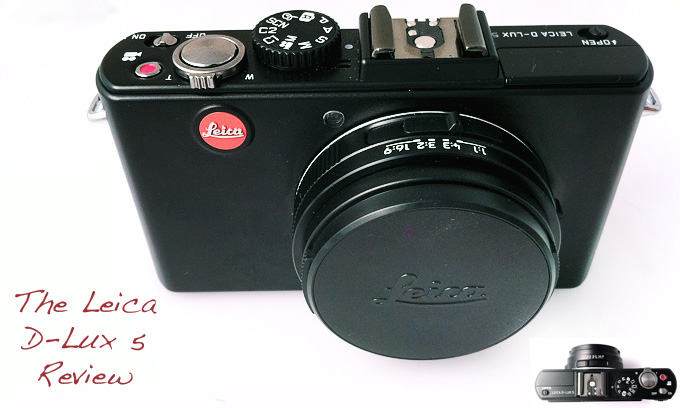
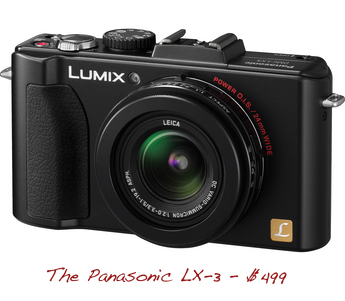
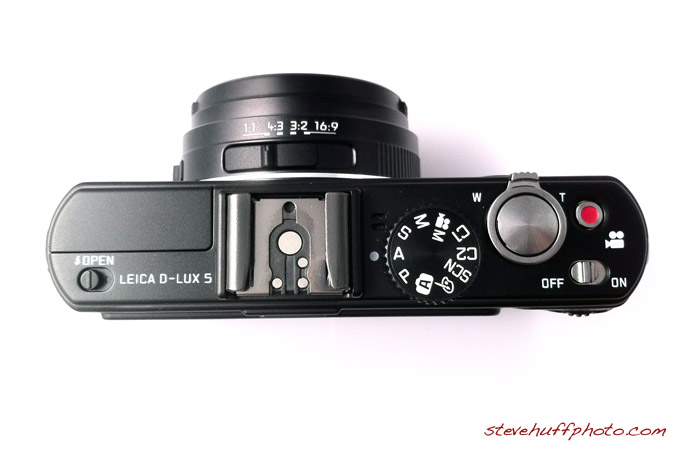


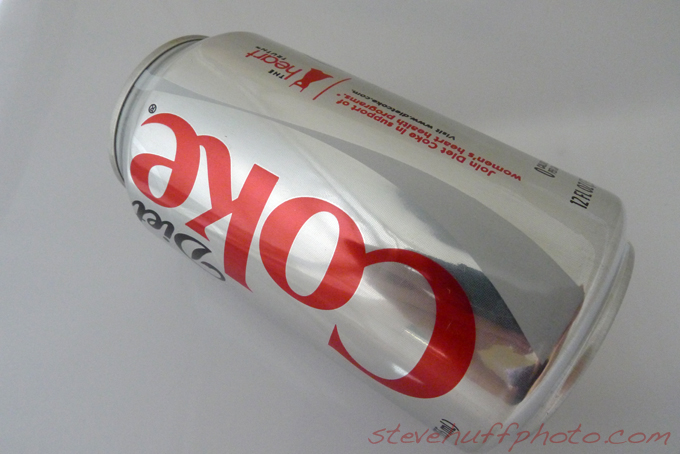

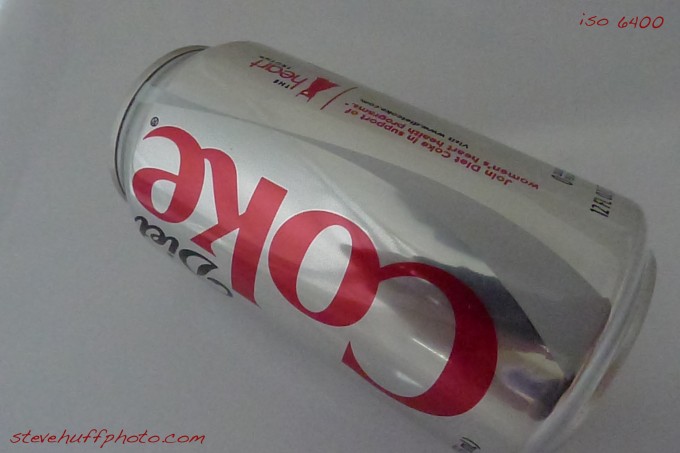
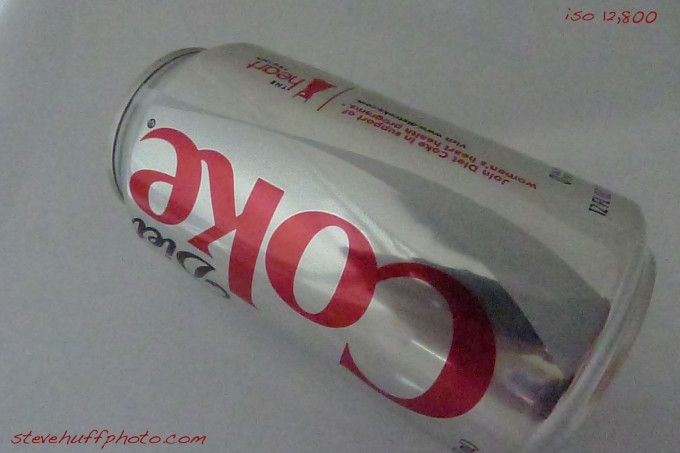
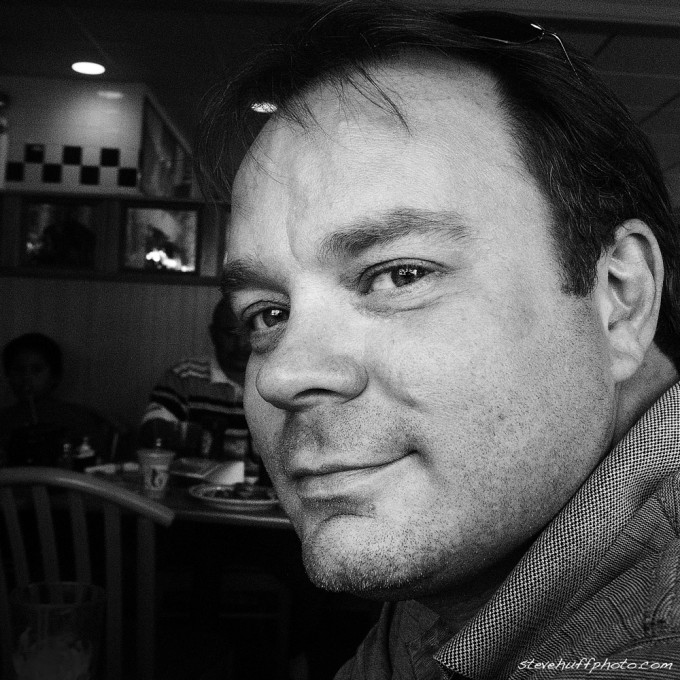
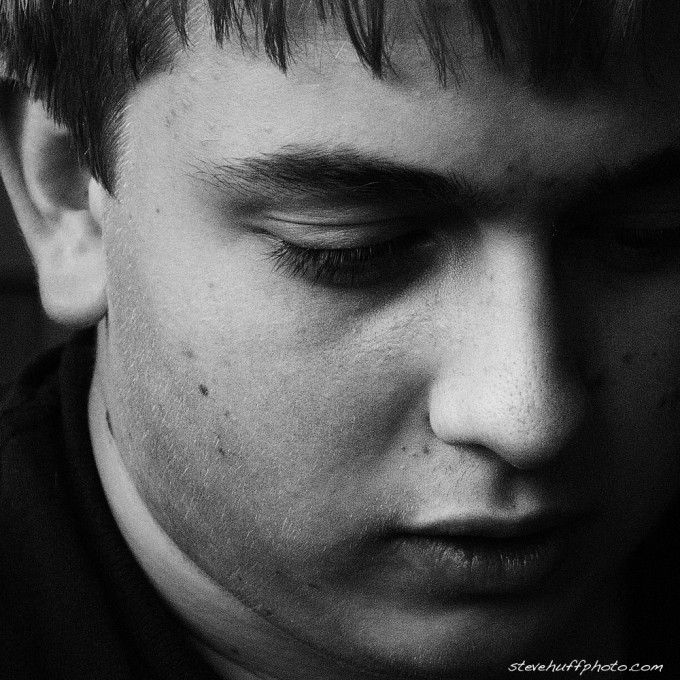
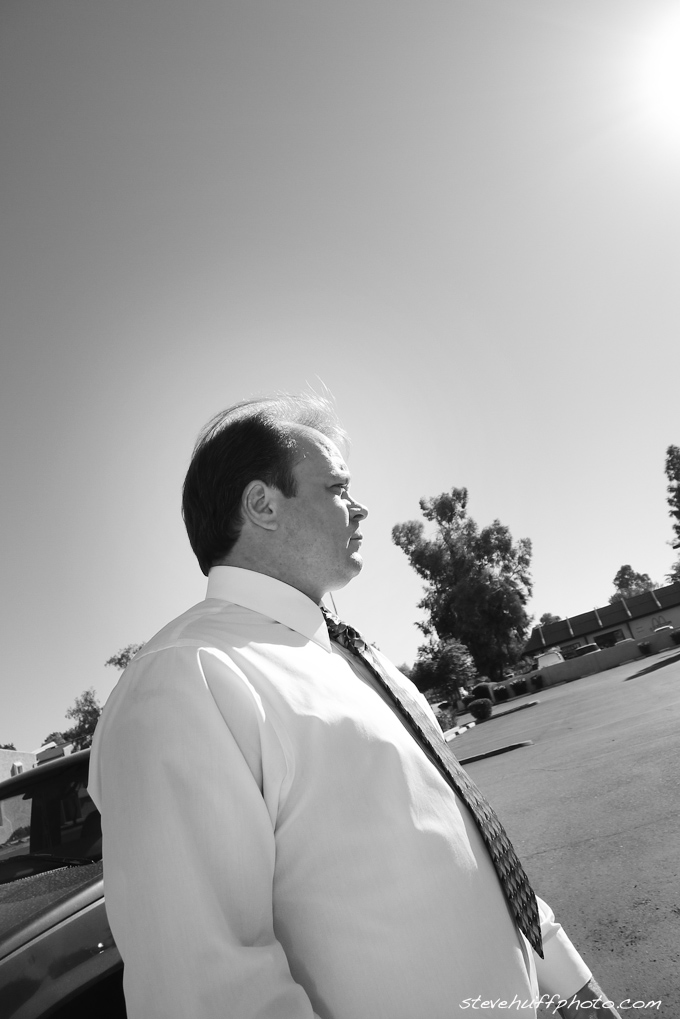

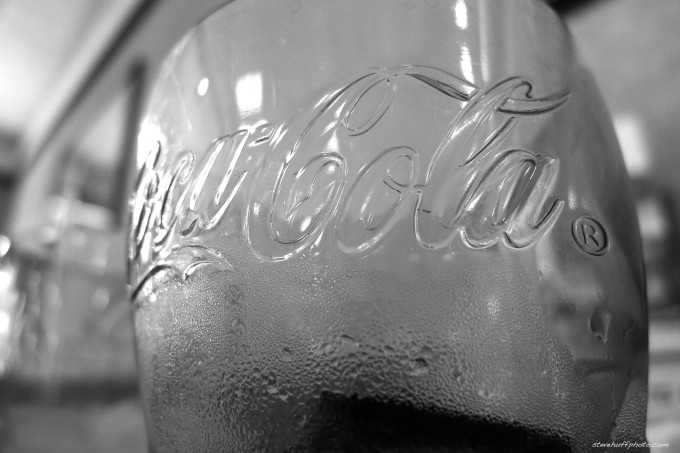


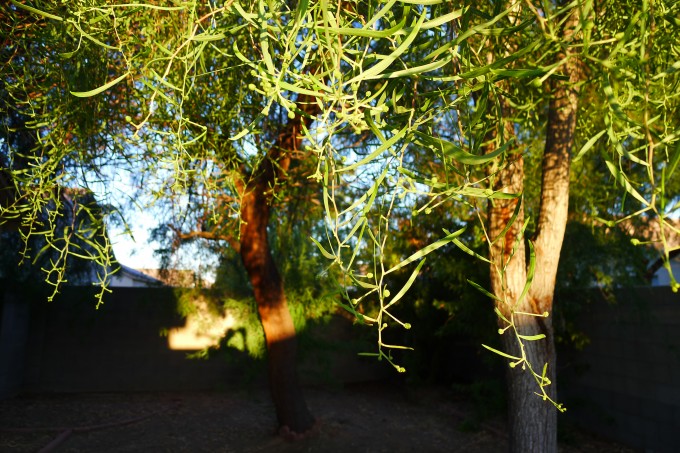

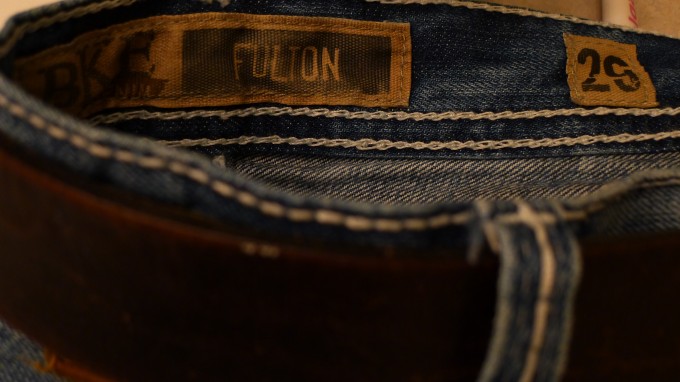


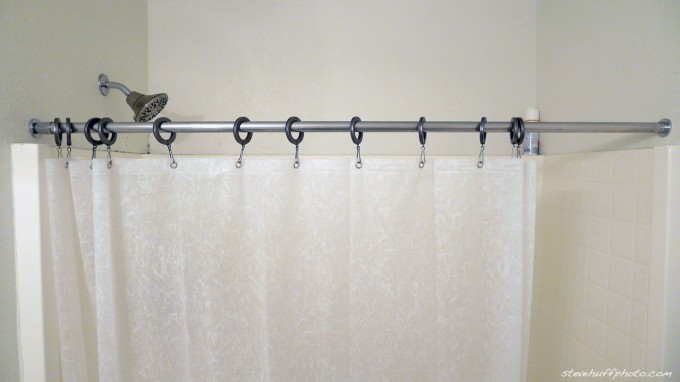


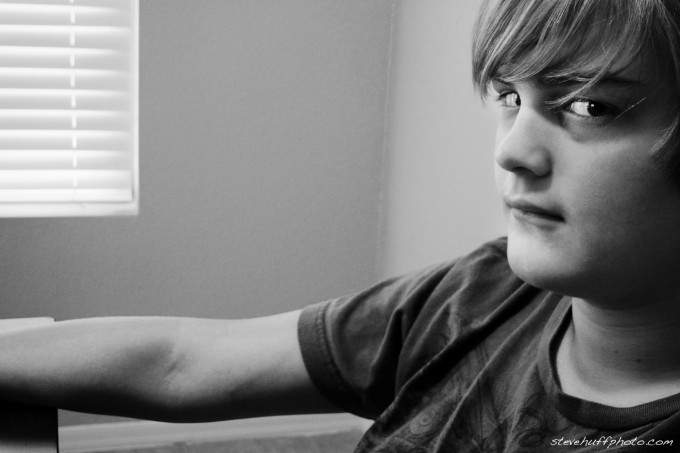

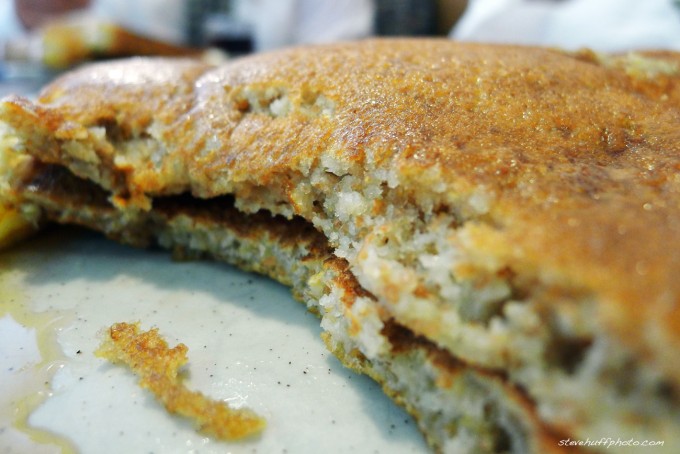


Steve,
Could you please tell me what the highlight setting on the D-lux 5 is and where on the camera I may find it? I had sent my camera in for repair and was told there was nothing wrong with the camera, but that I had it on the highlight setting on.
Thanks,
John
It has been years since I used that camera so I do not remember the menu or settings. What is it doing that made you think it had a defect? If you explain that, I may be able to tell you where to look to turn it off. Also, if you sent it in for repair, did they not turn off the setting? Thanks!
With havin so much content do you ever run into any issues of plagorism or copyright violation? My blog has a lot of unique content I’ve either
authored myself or outsourced but it looks like a lot of it is popping
it up all over the web without my agreement. Do you
know any solutions to help reduce content from being stolen? I’d truly
appreciate it.
I used to have issues with it until I put a lawyer on retainer and had him do the work needed. Ive had this issue with YouTube videos I make, as well as this content here. Happy to say only a few issues over the years, that were taken care of quickly. Most who steal content have no viewers or readers so its really not an issue unless a huge site steals your work.
Steve,Thank you for your review, I track down a used D-Lux 5 through Ebay and since I’m a absolute novice can you suggest what shooting mode I should start with?, right now I have in on “A” I assume for auto and the aperture setting if I’m not mistaking on the lens barrel at 1.1 I’ll be going on vacation soon and just would like to have sort of a “Auto” pilot setting to get used to this wonderful camera. Your suggestions would be grateful.
Thankyou for saving me many dollars I have the Leica D-Lux 5 however failed to understand its Macro benefits until reading your review. I was in the verge of buying a new camera with Macro ability or a Macro lens for my Sony Nex 5.
…the best darn camera I’ve ever owned!! Worth every penny and then some. It has all of the functions of a SLR without the bulk and weight (or the intrusiveness) and with so many features, I don’t feel the need to have the ability to have multiple lenses. I take this wondrous little camera every where I go (for all of the above reasons) and I’ve captured so many “photo ops” that I wouldn’t have been able to have done with another camera.
Your reviews are superb mate! I click onto you site to find out what and why etc so all i can say from Australia is – keep it going….appreciate your excellent comments!
Have you had an opportunity to compare the Sony RX100 to the Leica d’lux 6? Torn between the two for a pocketable P&S. Thanks!
anyone ?
Hi Steve.
Thank you for such an informative review and website. Your contribution is very much appreciated!
I am going to make a comment that I have never seen made about the d-lux 5 vs the d-lux 6.
I think the d-lux 5 takes a better photo?
This has nothing to do with comparing the two cameras in movie mode, as the d-lux 6 would obviously wipe the floor with the 5, it is that much improved in so many areas over the d-lux 5. And the new aperture ring of the d-lux 6 is a much needed and welcomed improvement.
But, to me at least, it’s all about photos. I say again i think the 5 is noticeably better with images?
Am I seeing things and/or have you found this to be the case at all Steve?
You wouldn’t expect this from an update but it doesn’t sound that implausible given the d-lux 5 has a sensor 1.24 times larger than the d-lux 6.
I tried a d-lux 5 for a few weeks then tried a d-lux 6 and then another different d-lux 5 again in both auto and manual settings.
I found the d-lux 5 images have better jpg colour rendition and are cleaner and more 3 dimensional.
The d-lux 6 images are near impossible to pick (blind) from Lumix images, but there is a discernible difference between d-lux 5 and the others.
Could you please give your thoughts on this Steve as I would love to hear your findings, given you have extensively used both.
Many thanks in advance.
roger anthony
Hi steve,
Very informative on the D-lux 5 review, really loved the output. The sharpness and the Colors are just awesome. Just wondering will you do a review for D-Lux 6 soon? Im in dilemma to choose between D-Lux5 or D-Lux6…
I have teh D-Lux 6 in hand and like it. IQ is not really any better than the 5 but some of the features are like faster lens, aperture dial on the lens, etc.
I suppose its a matter of what you really want, i walked into a camera store here in Australia and wanted a little camera to be able to take with me to parties, dinners and just general days out. I have the nikon D90 and love it but hate lugging it when i just go to dinner and parties, so i thought buy a small camera for that reason.
Well i bought the Panasonic LX5 but i loved the look of the leica D-lux 5 more but i thought spending the extra money is silly for basically the same camera.
When i arrived home i took it out and put it on the table and kept thinking how much nicer the d-Lux 5 was, well after racking my brain for the whole night i thought to hell with this i really want the D-lux 5 so i took it back and changed it for the Leica. I guess there is no use keeping something even if it is less in price if you really prefer the other.
Useful review! I’m about to buy one.. Thanks
I can,t believe it!!! I was finally decided to buy the D-lux 5 and someone told me about the roumors of the new D-Lux 6. Nooooooo!!!
It seems that in Photonika 2012 (september) Leica will present some new cameras and innovations.
So, ¿what to do? Should I buy the D-Lux 5 or wait untill september for the brand new bigger sensor of the D-Lux6?
I hate to buy a new cámera… ;o)
Hi Steve, I finaly got a Leica D lux 6. Fantástic cámera. Are you planning any review for this model?
Thank you very much.
Hi Steve, I have a Nikon D200 with a 18-200 zoom. A really heavy camera to carry on all the day. I´m thinking about a new small and light friend and I´ve got two cammeras that I really like. Leica D-Lux5 and Fuji X10. Can you give me your oppinion?
I´ve also been searching the web for good prices and just found this website…
Where the Leica D-Lux 5 is only 450€. In the rest of sites is arround 700€ or even 1.000. ¿Do you see it normal / credible?
Thank you very much and congratulations for your blog.
I can not recommend any website that I have not shopped at or used extensively, so sorry I can not comment on that one. Thanks
Thank you Steve, “Mr. Google” told me that there is something that smells bad on that website. Anyway after reading your great anf helpfull reviews I think I´m gonna get the Leica.
:o)
Hi Steve,
thank you for your superb website and wonderful camera reviews – I really enjoy ´em here in Sweden! I have a question for you about the Leica D-lux 5 vs X1. I´m just a beginners photographer but got ambitions. I´m now about to purchase myself a good compact to grow with. Is the D-lux 5 enough for me as an amateur or should I go for the X1? I don´t really have the cash for any of them, but what the hell 🙂 Both cameras seem to represent high IQ and superb handling.
Thanks again and keep up the good work!
Hi Steve, Have you ever tried the D-LUX 4?
Because i’m considering buying the d-lux 4 or the d-lux 5 but I have read somewhere (leicarumors, etc..) that the d-lux 4 is sharper with less noise at the first isos. That because the d-lux 5 would have a “stronger” noise reduction which give less “noise” and grain but fllatness and kills some details. I have seen some image comparison and I really don’t know what to think about that.
I would the same thing with the Lumix LX3 and the LX5. Even reducing the noise reduction on the LX5 to the lowest and intelligent resolution to the highest, you don’t get jpegs straight out the cam sharp as the ones you get with the LX3…
Thank you for your great review of the d-lux 5 🙂
Yes… I reviewed it long ago
http://www.stevehuffphotos.com/Steve_Huff_Photos/LEICA_D-LUX_4_REVIEW_AND_SAMPLES.html
and again here
http://www.stevehuffphoto.com/2010/06/03/the-d-lux-4-is-it-still-a-good-option/
It’s a great camera, even today.
For anyone who is familiar with the Leica Lux5 and Fuji 10X, I’d be really curious to hear your opinion on which you prefer and why. I have been unable to find any decent comparisons. Thanks in advance for your opinions.
Cheers
Forest
Sorry I meant comparison of the Fuji X10 versus the Leica Lux 5
Dear Sir! Thanks for a great page. I sold my Nikon D300 and got the Dlux-5 titanium. Fantastic. No more to say. Regards!
I have been reading/studying your reviews recently and have been torn between 2 cameras. In the under$1500 range I am looking at and torn between the Pentax k5 and the Leica D Lux 5. I will be shooting hockey, soccer, children and my favorite subject, faces. I want something that will allow me to create depth of field.For that reason I was deterred from the Sony Nex 7 in this price range. Opinions/suggestion appreciated!
Go with the Pentax, MUCH better camera!
Thank you Steve! I was heading out tonight to buy the Pentax, however, I am also intrigued by the (hopefully) soon to be released – OM-D. EM-5. Which of these two would best suit my needs? I respect and appreciate your input. 🙂
Instead I will purchase via your BH or Amazon link…. Love this site!
Hi!
We have had the DLUX5 for a very long time, and DLUX4 before. Both amazingly good cameras. We have a small problem: we have started shooting videos in AVCHD. Technically and qualitatively, the results are good. On the other hand, we cannot make sense of the way the camera archives the videos on the card, and apparently the numbering system resets when you change or format the card which is a problem for people who use archiving software, like us. Anyone who had any positive / successful experience on how to solve the problem?
Thanks to you all, now I have one Leica d lux 5. Amazing Camera obscura for me!
Ciao Mike!
Yes!
http://www.simoneraso.com/ny.htm
Very moving photos Simone! Which ones are with the LX 5-the B&W’s?
I have had Nikons for over 40 years, Currently have a D60 converted to bw infrared, a D200 converted to color infrared, a D200 and a D90 as they come out of the box. Got the LX5 last summer and it hardly ever leaves my pocket. I love this thing. The pictures are great, the flexibility to switch to BW or some other form of color or Raw is amazing. Got a Metz flash for it as I hate the pop up but the low light capability means I can take it out at night without needing a flash.
I love this little camera.
My personal work with the D-LUX 5 here
http://www.simoneraso.com/ny.htm
Hi Simone!
I left my comments in the wrong place (below).
Great, sensitive photos on your site!
Which ones are from the D-Lux 5?
Thanks.
My D-Lux 5 Titanium arrived today. It’s… beautiful! I paid 949 Euros and, yes, I’m aware of how ridiculous the price is, but… I couldn’t resist. I already own the X1 (since January of this year), and although I really, really love the camera, I just felt I needed the D-Lux 5 Titanium. Now the big question is: Does the D-Lux 5 take better pictures than the Panasonic LX-5? The answer is: yes! Not really because there’s a lot of difference between the two, but because it’s a psychological thing. Holding a Leica in your hands usually means you pay more attention to what you’re photographing. Sounds silly, doesn’t it? It really works like that for me. If I shoot with a Sony NEX, I feel like I’m using a computer. With an Olympus Four Thirds camera (I own the first one.. the E-P1), I already feel more like an actual photographer, but then there’s still something missing. With a Leica, however, it’s the real thing. It’s Leica! Hope you don’t think I’m crazy…
HI, Steve! I need you proffesionl advice. I planing to buy camera , but I can’ t find solution… FujiFilm X100 or Leica D-Lux 5 ??? Im not professional photographer, but I very like amazing shots. I travel a lot and fantastic pic for me very important !!! Please, let me know , what camera will make me realy happy, make my life easy and full of color 🙂 ??? Thank you so much !!!
Do you want a Zoom…. Yes Leica
NO …. Fuji
You lose some quality with a zoom. (The Leica is the best quality zoom that I have ever come across on a compact). But the fuji has a set lens, so no compromise is needed.
Thanks for this website, the review and this thread.
I just bought the camera this weekend after having read several reviews specially Steve Huffs. I have little experience with the camera so far but what I can say is that the manual/documentation in the box is less than sparse.
I just walked into my camera pusher and paid for the camera refusing any introduction to it as I have owned several cameras, I have access to the internet and I’m not that stupid. After having run through the menus on the camera and the manual I had to realise that all the things I mention above is not enough and I that had to buy Alexander S. Whites book on the camera. Buying it as a PDF-file is not that costly though and it seems to cover all my questions and doubts.
Just a hint to other buyers confused with the cameras abilities.
Cheers Søren
Hiya Macjim.
No-one upset me. I’m just saying that (IMO) most people who go for a Leica (Other than the badge) go for the image quality. And I believe that they would be better off using just the basic camera. It is fabulous. great images etc etc.
The idea of accessories is very appealing. (Makes it look nicer, just rounds off the kit etc). But in this case thay are expensive and FOR ME don’t deliver what you would expect.
The D-Lux 5 camera however, is without doubt the best high end compact I have ever used.
sorry if I gave anyone the wrong impression.
;~>
Woh! Chill out man! Don’t know who’s upset you but there’s no need for this kind of reply. Life’s too short!
Firstly let’s get this straight. THIS IS NOT A LUMIX.
The lens is the same and the sensor is the same. The body is very similar although different. The software is streets ahead, and the firmware is different. Most importantly the FEEL is different (you are a creative photographer right?, That is why you are reading a review for a Leica). If you want to take a few pics of the kids on the beech , and maybe a christmas party. Then the Lumix is for you. It is an excellent camera with great results, and half the price.
But you are reading a review about a Leica. I therefore assume that “Getting it right” is important to you. That extra “Feel” is what you look for. Well,the results are nothing short of stunning. Very sharp, excellent colours. The techy specs are available elsewhere. But Iwill just say that this is a 10 meg camera, ‘though you would think it were double. at A4 print and up close on a 40″ HDTV. the results are indistinguishable from my EOS 5D MkII (£1500) and EF70-200 f2.8 ISUSM (£2500) lens. Put like that it it very cheap indeed, THIS ROCKS. and it fits in you pocket so it is always there.
You want cheaper then the lumix will deliver 95% of the results, which will be more that enough for most people. You want the best … That is why you pay for a Leica. If you want the extra 5% , then the extra cost is worth every penny.
There are a number of available accessories for this camera. And of very different usefulness.
The first I tried was the leather case for the camera. It is a very nice piece of kit, well made, looks great and is robust enough to provide good standards of protection. It is, however a little cumbersome to use in my experience. taking time to remove, place the loose part in a pocket etc. Not for a fast point and shoot street photographer. More the family camera.
The BIG drawback with this camera is the lack of a viewfinder. There is a very good screen on the back (The best I have yet come across by a large margin. But in daylight it gets to be difficult to see properly). The electronic viewfinder (The version I have is the “Panasonic” type. I don’t know if there is any difference between it, and the Leica version). fits on the flash hotshoe (no flash, no back protector ). the definition is very chunky, and there is an equally chunky diopta dial that in one click will take you way past your setting. In short it is a total waste of money. And means that the camera won’t fit in the case. It’s not cheap either.
The JJC LCD Hood LCH-LX5 is a hard plastic flip up hood which also fits in the flash hot shoe, While it undoubtedly protects the screen from scratches, it does nothing to make the screen any easier to see in light. (You need a viewfinder for that). But at £10.00p it is quite cheap and does help. but I don’t feel able to reccommend it.
The big dissappointment was the Hand grip. It screws on to the off centre tripod boss. the advantage is that the tripod boss is now central. But although it is built under the Leica name . the grip fits to the bottom of the camera, and leaves a lopsided gap between the camera base and the grip on one side. Not what you expect from a firm that you pay this much over the top for the quality that you associate and expect from a product carrying the Leica name. Not only that, but it covers the bottom flap. So every time you need to remove or change the battery or memory card . you need to remove the grip. This too is not cheap.
We now vome to the GGS LCD Rigid Hard Glass Screen Protector For Panasonic LX3,LX5,Leica D-LUX 4 High Transparency, Antiscratch. At about £7.00p this is a small tayloed piece of glass that is superimposed on the screen of the D-Lux 4 or 5. It is easy to fit un-noticable, resists scuffs and scratches, it is Excellent .
So to sum up.
If you want a superb camera that allows you to capture pretty much everything , while not carrying the full size kit around. This is it. but my reccommendation would be to buy the camera, the screen protector and a good belt pouch. you’ll never regret it. Just leave the addons for the tourists.. (timholyoake@hotmail.co.uk).
I’m very late to the game (and this was a great review). As regards blur, it’s not that difficult with a modicum of post processing to add blur to the background of a photograph.
How easy or difficult the process will be depends on the subject matter of the photograph; it’s fairly easy with portraits, not so easy with the examples of blurred backgrounds, above.
which memory card do you suggest with this camera?
Great review, many thanks, Leica arrived to-day, need to pick it up from Post Office to-morrow, then play time.
Addendum.
On the price difference issue between the LX5 and D- Lux 5.
Understand from a source I have, that there is a dedicated
production line for the Leica where only the closest tolerence
components are used in the producing the D-Lux5, with Leitz
engineers overseeing quality control.
Am going to buy one based on Steves review,and the old adage,
you get what you pay for.
Peter.
Thanx your exemplary review of the D- Lux 5 Steve.
I find many of the points raised in the subsequent discourse interesting.
Sensor size, pocketable. Been there, got the T shirt 60 years ago….
That was when 35 mil cameras took off. Oh my, the roll film brigade
condemned them as just snap shot cameras. Well, all those years ago
I saw the potential and bought one.
The one I bought fitted my shirt pocket, and went with me everywhere.
As time went by, technology improved, and the quality of 35 mm rivaled
roll film.
The best camera, Steve, is the one you have with you when you want to
take a picture. Technology will create image quality in pocket cameras to
equal current DSLRs. Hope you understand
Peter .
Steve.. need your help..
I shoot D-Lux 5 with raw in aperture mode.. how do I enable the flash ? Can’t find it on manual.. 🙁
Thanks
Eko
You just slide the lever next to the flash and it pops up but you can also go into the menu and change the flash settings too. It’s in the camera settings.
Thanks for an excellent review Steve. I’m considering both the D-Lux 5 and the V-Lux 30 for my new travel camera. I like having the ability to zoom close but it seems like the D-Lux 5 offers far superior image quality due to its larger, CCD sensor and its fast f2.0 lens.
One question – did you (or any other readers!) get a chance to shoot the D-Lux 5 with the CF22 external flash? I have a CF22 on my old V-Lux 1 and am wondering if it performs well on the D-Lux 5. Thanks!
Great review,, hey I am in between this and the Fuji X100 as an everyday carry on so I don’t need to take my 5D II, which one would you prefer since you used the X100? thanks;)
Wow! I’m really loving the theme of this blog http://www.stevehuffphoto.com/2010/09/28/the-leica-d-lux-5-review. It’s simple, yet effective. A lot of times it’s hard to get that good balance between superb usability and appearance. I must say you’ve done a fantastic job with this. In addition, the blog loads extremely fast for me on Opera. Exceptional Blog!
hi steve,
i have just bought this camera, what do u think is the optimal setting for normal shooting?
It all depends on what you intend to do with the camera and what type of photography do you take? You would be best to start off by using the P mode, Programme, as that will give you the best photographs as the camera will decide what is best for the scene, and this will allow you to get used to the controls and handling at the start. Then, as you become used to it you can then become more adventurous by using either the aperture priority, or shutter priority, by trying these out you find you will have more control over what is produced. If you haven’t done so before, get into the ways of taking RAW photographs. This will give you the maximum image quality allowing you to use Adobe Lightroom 3 to edit your photographs resulting in better images than when taken in JPG. You can of course, take RAW and JPG which would give editable and instantly usable photographs if you want to share photographs too, but RAW allows you to make a duplicate photograph to work on trying out different profiles etc.
I and many other D-Lux 5 users keep the flash off as we tend to use the available light resulting in some very nice images, but you would need to drill down through the menu to switch on and various settings such as:
Switch off the digital zoom as it only crops the images to see further
Switch on the mega image stability (can’t remember it’s name!)
Set to RAW only (only if you are will to try editing in Lightroom or whichever application you wish to use)
Adjust the sound settings for the shutter sound and control sounds dependent on whether you want to be stealthy or if you are shooting in noisy places
Chose the movie quality you computer system can handle.
As there’s too many for me to name, I’ll let others add this list of setting changes but, one thing you must do and it is this: just get out and enjoy your new camera and experiment with it, by trying out the different lens settings such as 1:1 which gives you square photographs, and the manual, auto with macro and auto lens setting on the side of the lens. Try keeping the flash off and try experimenting with the depth of field (aperture) too. Finally, the bottom right button on the back allows you to switch on the thirds grid. This will help you not only level the photograph but also help compose better too!
Oh, just one more thing, sorry for the ramble, look for Alexander S White’s book, The Photographers Guide to the Leica D-Lux 5, available as a PDF or dead tree, which is invaluable to getting the best out of this wee gem.
PS: the short answer is P, Programme mode is the best setting for normal use. Don’t use Auto (A in the camera logo) as it only takes JPG’s.
🙂
Hi Steve and others,
Does anyone know whether the optical and/or “intelligent” zoom works while shooting in the video mode? I can’t imagine that the intelligent zoom would work properly (?)… but how about the optical zoom? This camera would primarily be for me to have as a fun p & s when I don’t want to lug my SLR around… but my husband sometimes likes to goof around with video modes…..
I got the L-5 a few weeks ago, and it rocks..I have the X1,of course cannot compete w/ it coz it’s a total different camera. The L-5 is far better than the canon s90 by miles…Fast focus, clean pics…
I notice at times that you talk about the DMC-LX5 and now and then change back to D-LUX 5 in the text 🙂 Thanks for the review …!
It’s a great review as usual. I have the D-Lux 4 and happy with it. Did you ever compare the overall image quality of the D-Lux 4 to the D-Lux 5? I looked at a lot of photos from both cameras and think that the D-Lux 4 actually gives better photos in terms of tone, color and saturation. It’s not because I own a D-Lux 4. One can actually guess which of the two cameras was used. Perhaps, the advantages of the D-Lux 5 are the better ISO performance and the added zoom. However, I would always prefer a camera with the better overall IQ in terms of color, tone and saturation. This is why some people spend the money to buy the X1. What do you think?
Thanks for the review… And i like the way you write, you speak for both amateurs and professionals.
And i guess i gonna buy this camera, rather buying a cheap DSLR. Your Photos made me crap in my pants!
I would like to have one M9… but you know, it’s f******* away from my budget!
Hi Steve, I found your blog from Googleing the Leica D-Lux 5. I liked the D-Lux 4 review and I feel like I really understand what the 4 is all about. I’m seriously thinking of offing my Cannon Rebel XT and getting a 4 or 5. I’m figuring a 4 off ebay or amazon for $400-500, or just pony up for the 5 and get it was the warranty and all shinny new.
I liked the 800 and 1600 ISO shots, I’d like a solid lower light point and shoot that has a good manual feel to it. I wish there was a way to get more depth of field though. I guess I can always snag a D-Lux and if I really love it for a year or so, save up and get a used M8, or M9 if the price comes down in a couple of years.
Thanks again.
Thanks so much. Clear test, nice shots.
I tried dlux5 two days ago i got astonished. I took shots at night with 800/12000 iso.
I’m usually pretty hard to impress, but this camera did it.
I needed to go through some extra info about it and your blog helped me out.
Thanks again steve..
Great review. Very detailed. You’ve gone above and beyond. I’m going to stick with the D-Lux 4 and my Canon 7D for a while. It can get expensive tying to keep up with the latest electronics. But, I’m glad to see Leica pushing the D-Lux line to new heights. I’ll be ready for the D-Lux 6 when it comes out. Until then, I post my D-Lux 4 stuff on http://www.gulsonphoto.com .
I had the opportunity to try both the X1 and D-lux 5 at the Leica store in Mayfair, London. Having read this review, coupled with having seen a wonderful underwater video shot with a D-lux 4 in a protective housing, I ordered a D-lux 5 from B&H.
I’m not a ‘pro’ photographer, but have used various cameras for natural sciences (i.e. Biological) photography. The versatility of the camera, the inclusion of Lightroom 3, and your review here, all swayed my final decision.
Thanks Steve !
The new Olympus XZ-1 will be the deathnail for the Leica d-lux 5.
oh how superior is that Fabby F1.8 Lens.
Olympus have a Proud Pedigree with Their Superb Optics.
i’m getting it … Jim Seekers from Edinburgh Scotland.
Don’t rush in and buy one until you find out if it lives up to the tech news. It may have a F1.8 lens, but is the camera up to the lens’ standard and will it produce high quality images?
It might be worth your while to await the reviews and then decide, regards,
i know this is a minor point for many but i am getting a little confused about an aesthetic issue concerning the d-lux 5 that you might be able to answer for me (and thank you for the great review!). i want to upgrade the d-lux 4 but have been seeing two different images of the d-lux 5 online. one version has a silver accent around the barrel of the lens when it is extended. in your review, the camera does not have that silver accent. i for one would love one without the silver accent. was there an early run of d-lux 5s that were ALL black with less silver accenting?
My version was purchased just before Xmas in Jacobs, Glasgow (Scotland) and the only chrome highlight is as shown in Steve’s video; the chrome ring at the base of the lens next the the body. The lens is all black when extended. Hope that helps, cheers
Thank you macjim I have looked at your photos of Airdrie town centre which are very nice and also nostalgic I was often in Aidrie in the 70s due to business and I had many a happy night there.
I myself have been a photographer since the late 50s and have used many types of camera since then. I am interested in the D Lux 5 for two reasons:
1. I always wanted a Leica but the film cameras were always to expensive for me.
2. I have a Fuji S200EXR which has the same size chip (1:1.63) and I get beautiful results from it but when I compared its photos to sample photos from the D Lux 5 there was a difference in quality which could not be ignored.
Finally in my sunset years I find that I can afford a Leica Camera and my hesitations have now been resolved.
Now! if only I can remember where I put my cheque book
Yes, I too would love an M9 but that will be waiting for a lottery win for me. 😉
Can’t remember where my cheque book is too!
The O.I.S is very good as I’ve been taking photographs in the street at night handheld and the results are pretty good. The way to find it is by setting the mode to P and then look in the camera settings by scrolling down till you see Stabiliser, there you will find four settings, off, auto, mode 1 and mode 2. Mode 1: the camera continually adjust the sensor. Mode 2: the camera will only stabilise when you press the shutter, and auto: the camera decides which is best at the time.
Your best bet is to go to a camera shop, if a stockist is near you, and try before you buy to see if you can indeed take photographs without visible shake in the image. You could also try the D-Lux 5 with the electronic viewfinder but that isn’t a cheap option. If you can, have a look on the Amazon site and search for Alexander S White’s book, Photographer’s guide to the D-Lux 5; this can be bought as an PDF book and this will give more info regarding the stabiliser feature. Hope this helps you. Kind regards,
Loved your review but am abit a sea! You mention Mega OIS but there is no mention of it in the specs or the handbook (.pdf version). Nor is there an insication of a control for it in any of the photod of the camera.
This is important to me as I am no longer very young and my hands are not as steady as they were.
Can you expand a little on this for me cos it is my sticking point on the purchase of the camera
regards
Peter
I’ve posted two photographs on my Flickr site: thesrpspaintshop, taken hand held with the Stabiliser set to auto, no flash and only using the available light. No processing done to these photos so their straight out of the camera. PS. See my note to you posted 5january 2011
Great review, thanks Steve. I think I’m now going out to order the D-Lux 5 as a direct result of your review. I like your ‘real world’ attitude to reviewing, please keep up the good work, it’s much appreciated
Bob
London
Interesting. I was particularly impressed with the dynamic B&W images I saw from the..er… PanaLeicaLX3Dlux4 on Laurence Kim’s
wonderful blog. ( Check out his beautiful wedding portraits). So now I’m reading that the ….here we go again, PanaLeicaLX5Dlux5 … needs a boost in contrast to acheive the same result. And that’s my question really, with an adjustment does it give the SAME result in dynamic B&W mode?
Funny that most people are having a hard time to decide…Panasonic or Leica. Here in Japan we can’t get the English Menu on the Panasonic version as someone already pointed out and Japanese menu’s SUCK even though I can read them. Of course in this world gone crazy I could import the Panasonic back to Japan and how ridiculous would that be? No, guess Panasonic have decided for me that I should buy the Leica!! ha!ha!
and Matt… ( 75 ) you did make me laugh! All of the posts and comments here generally are very good but yours is really arty and beautiful! Discuss!
No offense intended!
Thanks Macjim, bought the book.
Regards
hi steve. do you think the LX5 will make a good camera for indoor shots for an interior decorator who needs to document his work and possibly submit the images for a magazine?
Dean, have a look on Amazon for a PDF format book called Photographer’s Guide to the D-Lux 5 written by Alexander S White and that should give a good insight to the ins and outs of this fine camera. It may also be out in paperback too but it’s a little bit dearer, the PDF version is the one I have and it’s installed into the iBook app on my iPhone. Just handy for reading at my leasure and a good reference guide to have available.
You could also, I’m sure, copy the users handbook which comes with the D-Lux 5 on CD and have that too on whichever device you may have with you — iPhone, iPad, iPod Touch, Andriod etc
For further inspiration, have a look on Flickr for the Leica D-Lux 5 group to see what can be achieved with this compact camera.
Kind regards, macjim.
Wonderful!
Use her in good health.
You may want to play with the Contrast one or two notches if you shoot B/W. I think Steve found the same thing.
Best,
I bought the DL5 and am very happy with it. I now have a lot to learn as the instructions are pretty basic.
Thanks for your input Tom
I am a photography novice and want a better camera than the ol P&S. I have two kids which play soccer and this will be my main use for my new camera, I just need some guidance as to which to buy, an entry/mid level DSLR such as Canon Rebel T2i/Nikon3100 or the Lieca D Lux 5. Picture quality is my main buying point. Thanks for your help.
Photos of kids typically require fast auto focus. The T2i and 3100 win hands down over the Dlux 5. Both of them also have bigger sensors, which will give you much better image quality, particularly when using higher ISO for low light situations. As good as the Dlux 5 is, it’s still only a point and shoot.
Vico and Armanius: The D3100 lacks “image stabilization” (or O.I.S), doesn’t it? (very important to prevent blur from hand movement; whereas the D-Lux 5 has POWER O.I.S. for blur free photos. Still, for kids playing sports, I don’t think Vico wants the D-Lux 5… he might want a zoom that goes beyond the D-Lux 5’s 90mm reach.
Just thought I’d say I went out and bought the Leica D-Lux 5 today. Looking forward to trying it out in anger.
macjim,
EXCELLENT and Congrats! (funny btw)
I have the Pano ver and I’m crazy about her.
We deserve to treat ourselves to our passions…….. oh oh..
Hi,
I’m looking at the v-lux 20 or the deluxe 5. What do you think when comparing them ? The quality of the shot is very important to me.
Thanks,
D
Dean, all I can tell you about is the Dlux 5. Amazing. quality is subjective, always, but I am over-joyed with her.
Thanks for a great review!
I have been shooting with a Panasonic LX-2 and I simply love it! fantastic pics and really easy to use.
Battery life is great and and it’s very reliable and tough.
I shoot lots in the snow and it always get the bright environment right.
I am looking to upgrade and really like the Leica. Great that they give you the Photoshop light room. Just bought a new Macbook Pro so to get the Photoshop w the camera got to be great!
I always buy from B&H photovideo and I have only good things to say about them. It took me 3 days to get the camera from New York to Sweden! Always very helpful staff when you call them too.
Thanks again.
Bjorn
Hi guys,
Great blog. I am an amateur, uses a D5000 mainly for holidays etc. Question will a D-LUX5 make my DSLR redundant or are they just a great match?
It will all on use and demands on print quality: D-Lux 5 for sure is excellent for holiday snapshots (even indoors) and much more handy and portable than a DSLR. I would not be surprised at all if you find yourself using the D-Lux 5 so much that the DSLR in reality becomes redundant, it’s a fun and inspiring camera! And after all the best camera is the one at hand when you need it! Still, it’s unfair to compare as a D5000 has a sensor apx. 6 times larger than the D-Lux 5, changeable lenses, etc. – so in the end I’d go for “great match”…
One question I have regarding the image quality that I’d like more info on is: does the D-Lux5 suffer from purple fringing?
One thing that wasn’t mentioned in the review regarding the image quality, and that is why I’m asking the question now, did the images suffer from the purple fringing at all?
I’ve owned and shot with LX3, DL4 and now DL5. Leica seems to render the colors a bit better and may have better antialiasing–resulting in “smoother/cleaner” images compared to the Panasonic.
I’ve been shooting with the DL5 and have posted a bunch of test shots on Flickr. Most of them were straight out of camera JPEGs.
http://www.flickr.com/photos/soelin/sets/72157625218980895/
BTW, Adobe ACR 6.2 supports DL5 RAW files even though their website doesn’t list the camera as one of the supported cameras.
Wow, your shots look great-especially the low light ones! I have been tempted in the direction of the Oly XZ-1, but lookinh at your pis and others here now I’m not so sure…..
Comparing photos in the Flickr groups for LX5 and the D-Lux 5, the Panasonic photos generally look very good, but the Leica photos look arty and beautiful. Discuss.
I just bought a Leica D-lux 5 a couple of weeks ago. I have noticed that my photographs of people have a lot of grain (noise) more than I have seen with other cameras (Canon SD780 IS, Olympus EPL-1, and Nikon D700). I notice this mainly in Lightroom when I use the magnification of 1:1 or 2:1. The images appear to lose resolution quicker than I think they should. I have tried changing a number of the settings on the camera and was wondering what are the best settings to use for portraits in low to medium light. There is a snap shot mode and this gives pretty good results. I have tried the smooth and standard setting and this does not solve the problem. I can remove the noise in Lightroom, but your pictures in this review look better and sharper. Are you post-processing your pictures or are they jpeg images directly from the camera. I guess my question is what is the best way to set the camera for portraits?
You will always see more grain at 100% views with the D-Lux 5 or LX-3 when comparing it to something like a Nikon D700 or EPL-1 because the sensor is much smaller. The images you see on this page were all shot as JPEG using various color modes, thats it. Not really any PP in these images at all except for the few that I converted to B&W and a couple more where I may have adjusted the levels a bit. Also, most of these were shot wide open with the lens at f2.
Welcome to the small sensor.
Thank you for the review, it really made my mind.
I got my 5 yesterday and I really didn’t mind paiyng the extra $300 over LX5 because I also wanted the Adobe LR3 license.
Thank yo for this review. As I just dropped my DLUX-3 in salt water. I need a new camera.
Can I use the batteries from the DLUX-3 in the DLUX-5?
If my DLUX-3 had a shoulder strap I never would have dropped it!
I loved the software built into the DLUX-3, so I’m looking forward greater sensitivity and
contrast of the 5.
Howard
Hi Howard,
Regrettably, they spec different batteries so you’re looking at starting fresh. One (small) reason I’ve not jumped into the LX5 fray is I have four LX3 batteries and the last I checked, aftermarket LX5 batteries aren’t yet even available. (At 1/4 the price, it’s worth waiting for the clones before stocking up.)
FYI, WIRED named the LX5 the Camera of the Year. FWIW.
http://www.wired.com/reviews/2010/11/pr_panasonic_lumix_dmclx5/
Thanks to Mr. Steve for many reasons:
1) I bought my D-Lux 5 last week and my life changed…
2) No more heavy cameras and multiple lens…
3) With D-Lux in your pocket all travel will be a pleasure…
4) Colours e angles like pro cameras and the light is superb…
5) Thanks again Steve. Every shot will be in your memory.
Very soon I’ll send my pictures…
JBartolo
A Leica fan from Brazil
Great review Steve. Thanks.
I have the Leica D-Lux 4 and love it so much I can’t bear to part with it. Do you think it’s really excessive to own both the 4 and the 5?
I AM selling my V-Lux 1 though. Really don’t like it that much. I might get a Lumix FZ100 in its place, but the D-Lux 5. . . ooooooo. I really want it. Does anyone own BOTH the 4 and the 5? And why would they?
Thanks for your great review. Love it.
I think once you get the 5 you will no longer need the 4. The 5 is everything the 4 was but better. BUT if you want to keep it maybe someone in your household could use the 4?
I decided to trade my C-Lux 2 for a D-Lux 5, but on second thought I decided to keep it and just get the D-lux 5 also. I can’t really justify from a usage point of view (except it’s smaller), so it’s mostly sentimental reasons, these Lecia’s are just so cool, and I’m confident that a spare camera will come in handy some day. I guess it could be fun to bring both to parties and the like and lend the old one to different people: more shots, more angles, shots you never could have gotten yourself…
Great review, thanks a lot.
i’m tryin to compare de V-lux 20 with the D-lux 5 because i have to buy one of those cameras this week for my father and i am a little bit lost. In simple terms, wich one is better??, i know this is a tricky question, but in terms of image quality…??
Thanks!!
If image quality is the only parameter, D-Lux 5 is the better as it’s built with image quality in mind – it’s much faster lens combined with a sensor almost twice as big as the V-lux 20 will make quite a difference.
But it’s two different kinds of cameras, really, targeted for quite different usage, so it’s worth considering how the camera is to be used. The V-lux is more versatile with it’s 12x zoom and it’s no doubt a great camera for casual point-and-shoot, while the D-lux will apeal more to those wanting portable possibilities and technical control over the shoot.
In terms of image quality, is the Leica d-lux 5 superior to that of Leica d-lux 4?
And which one do you prefer?
Check this out:
http://leicarumors.com/2010/11/07/leica-d-lux-4-vs-d-lux-5-iso-comparison.aspx/
Steve,
Great run-down, as always. I particularly enjoy your reviews and expertise. I am going to a smaller camera for mobility purposes and intend to go with the DL5 as a replacement for my Nikon D60. I have spent hours reading about which is better for image quality and your analysis has aided me in my decision to go with the DL and not Panasonic. I am not a pro photographer but desire good photos in a reasonably compact camera. I truly enjoy my Nikon; however, carrying all of the gear is a burden especially now that I am in a grandchild and travel orientation.I realize this is not a technical comment and I am impressed by the knowlege of those who comment on your site. I simply want a compact camera that takes good/realistic colored photos. As a young Lieutenant stationed at Ft Knox, I always enjoyed seeing General Patton’s Leica which he carried throughout his WWII service on display. Thank you for your expertise.
D.F. Shaffer
Colonel, Cavalry
USA, Retired
For downloading Lightroom one has to register with the Leica people as explained in the slim booklet found in the box. After properly filling out all the fields you are NOT YET registered. You have to wait for their acknowledgement via email (which they DON’T say). I went through a ‘being angry’ phase until their email arrived and after that everything was OK, Lightroom download included.
On the basis of your review, I ordered the D-Lux 5 from B&H. It arrived last Friday, and I’ve been having a blast with it since then. So far, I’ve been shooting only in jpeg, as I don’t have software capable of handling RAW format. I seem to have run into a hiccup with the Leica on-line product registration system, so I’m not able to download my copy of the Lightroom 3 software. Anyway, after a couple of phone calls to Leica, I’m hopeful that the glitch will be resolved soon.
After using simple Canon point and shoot cameras (PowerShot S30 & PowerShot SD950 IS) for the past 8 or 9 years, the D-Lux 5 is a revelation! I’d forgotten what it’s like to take photographs where I have some input — not letting the camera make all the decisions. Alas, I find I’ve forgotten almost all the things that I knew from back in the days when I was shooting with my trusty old Asahi Pentax Spotmatic II. I’m having to relearn a few forgotten principals. Nevertheless, I’m enjoying this camera immensely. It’s just the right piece of equipment for someone starting out with an interest in serious photography — or for an old duffer like me, looking to expand his or her skills in the art form.
I debated weather I should go for the X1 or the D-Lux 5. Your review convinced me that the 5 was a better fit for my immediate skill level and needs. It was the right choice. I’m having so much fun with the D-Lux 5! I’m already contemplating the day when I’ll want to move up the Leica model ladder (Hello, M9!). Many thanks for the invaluable assistance.
Dear James,
There is a very nice open source and free software to handle RAW files. It is called Rawtherapee. If you google Rawtherapee, it should be the first result. You can download it on the Download page, either the bleeding edge version (3.0) or the old stabel version (2.4.1). I have used both and they are both very good.
It is developed by a group of people who are passionate about digital photography, statistic algorithms and software development.
I am a happy user of Capture One of which I have a license, but I end up using Rawtherapee 95% of the time instead. By the way, I am in no way connected to the project, just a simple user …..
I think shooting in RAW on the DLUX series does improve you experience even further! I am a very, very happy user of DLUX4 myself.
Hi ct529,
Thanks for the info on Rawtherapee. I’ll take a look. Fortunately, Leica in Germany has gotten back to me, and my registration problem has been resolved. I’m now able to download my license for Lightroom 3, so I’ll probably begin there.
Great review, I am going with the Leica, the additional warranty time and the software more than make up for the extra $300. I like the overall design better also.
I am ordering it Wednesday. Will be using your links to B&H.
RJ
I am a beginner enthusiast in photography. Would love to have some opinions as I am very new to this realm.
I would love to have a camera that is small yet versatile. It can deliver DSLR or nearly dslr image quality. I can play with the functions and explore the versatility of all and carry it around me, snapping things with great clarity.
I am now deciding among Canon S95 (which I am not very keen in, but seems versatile enough), Dlux5 (which is pricey but apparently very versatile from the reviews I read) and Panny LX5 (which seems to be on par or near par with Dlux 5). Budget, versatility, image quality are very important characteristics to me. So which is better – s95/Dlux5/LX5?
I think Richoh GRDIII and DLUX4/LX3 or DLUX5/LX5 are completely different cameras, but I very much disagree on the Panasonic not being pocketable. I do indeed always carry my DLUX4 in my pockets, and I wear clothes with normally sized pockets. The difference in weight is 40g, and the difference in size is minimal. The quality of the pictures at low ISO speaks by itself: I think Leica has pulled out a zoom lens that competes with a prime lens (in the segment, of course).
It may only hold true in DK, but when you take into account that D-Lux 5 comes bundled with Lightroom, there’s no price-difference at all between the D-Lux 5 and LX5 – so actually, choosing is down to preference, not price…
Leica is a great value: I sold two years after the D-Lux 4 and the holster 505 €, only slightly lower than their purchase price.
The two main shortcomings for me were too cool colors and photos to 400/800 iso barely usable.
I hope the D-lux 5, to which I am eyeing, will correct that!
Well, what’s your verdict on the D-Lux 5 then?
geez christ, who gives a rat’s a$$.
Buy what you want, enjoy the hell out of it and live a normal life have REAL conversations with your family, loved ones, friends.
Holy shazbot!
I just purchased the LX5, it’s one amazing camera. I’m now going to purchase a x1 black when released. My preference, I have to sell other things to be able to afford it.
But I’m a frinkin’ adult. I know about the things in life that are really important like my son.
Again, go out, get what you want, live and love life.
There’s a lot of folks (including Cnet) saying the LX5’s jpeg engine is really inferior, it’s main drawback and the reason for paying higher for the D-lux 5.
Ed,
Personally I believe this is self-delusional thinking or purposely misleading based on ulterior motives.
So… Someone please actually buy both and show me. If this were actually true A) Leica would advertise the crap out of it no matter how small and irrelevant the difference. B) Do you personally think that Leica has the software resources background, etc, etc. to somehow do better than Panasonic in this regard? Beyond highly unlikely, more in the category of yea, right.
RB
http://ianho.blogspot.com/2008/12/lx3-vs-dlux4-lens.html
That is the previous debate, with someone buying both and comparing, and someone else writing to Leica and getting and interesting answer on jpeg processing.
I have just traded in my dlux 4 for a dlux 5. (i’m an amateur and a snob!) I am hoping that the lcd screen will be an improvement in bright sunny conditions. Should I invest in the evf?
Dear Steve,
Could you please do a DLUX4 vs. DLUX5 comparison as you did with X1?
Do you thin that the increased number of lenses in DLUX5 results in images being less sharp than DLUX4?
Well, it’s not from Steve, but here you go:
http://leicarumors.com/2010/11/07/leica-d-lux-4-vs-d-lux-5-iso-comparison.aspx/
I really like the first photo, really. Thanks Steve, I’m thinking about whether I should have this one for girlfriend.
Mike, AMEN brother. Enjoy it every day of your life if you can!
No one has made more mistakes in life then I have, but I’m a good soul to others and a great dad so I dig the hell out of what I dig!
T
I am waiting for the Titan version of this camera! I have the Dlux4 Titan. Sure, it cost more but whatever, everyone has their own vice.
do you know if the firmware has the nag notice if you set the camera up to remember lens position on power off? on the lx5 (and lx3) the firmware throws up a three second notice reminding you that you’ve set this mode every time you power on the camera. yes, you can half-depress the shutter to get rid of it but you really should be able to disable this message altogether! it’s sooo… frustrating!
thanks!
Thanks for rewiew. Clear, that no big difference from D lux 4, except one button exra and dial move to another place.
Why do you keep referring to the CCD as “large”? Would you choose this over the E-P2?
While I’m opening the can of worms maybe I can get some feedback on the following:
I have a Panny DMC-TZ5. An ok camera but I sure didn’t like the interface, just not user friendly IMHO. I replaced it 2 years ago with a Canon SX200IS which I love except for the fact it is slower than molasses at times and strains in low light. Canons interface is exemplary IMHO.
I need a camera that is easily portable – which I think the LX5/D Lux 5 will just stuff in my front pocket – Mostly I shoot at clubs, parties, fairs and other various events. I even shot a friends wedding, he had a “Photographer” but I grabbed so many good random shots because my camera didn’t stand out like a sore thumb. The photographer was done and I got shots of him doing keg stands, lol. What I really like about the LX5/D Lux 5 is the 2.0 lens for low light. Would prefer the new Nikon P7000 but size is a factor as well as it’s 2.8 lens. I need good low light performance and am looking to eliminate the flash as much as possible. With the SX200 I normally use 1600 ISO with flash turned down a bit so it’s not annoying. 3200 ISO is quick but grainy and low resolution 🙁
So, with all that in mind, is the interface different on the Leica? Easier maybe? And are there any other cameras one might recommend for a guy who just likes to capture random moments quickly and efficiently?
Thanks for any help as I’m not nearly as knowledgeable as those of you posting here.
I read somewhere that the Leica version is supposedly using components that are more in the sweet spot of QC. Has anyone else heard or read that?
“So, just to be sure once more, there are clear differences between the LX5 and the D-Lux 5 in terms of image quality and the user interface, ”
That is one heck of a broad brush.
The Better ver. of Lightroom. I don’t understand that. I use LR for my Pana LX5 and it’s perfect.
Now about speaking to Leica confirming “such as to bias better…..” Wonder if that’s in Panasonic’s agreement with Leica. Doubt it. There may be a different tonality to the B/W etc. but better image rez…. I would expect them to say nothing other then that anyway.
Could you please explain the Better LR Ver. Please?
Thx
So, just to be sure once more, there are clear differences between the LX5 and the D-Lux 5 in terms of image quality and the user interface, is that correct?
These in addition to the inclusion of Lightroom and the 3 year warranty of course.
Tim
Spoke to Leica UK about this today and they confirmed the different Firmware which makes the camera control more Leica feel than whiz bang Japanese style, and then there are internal settings such as bias to provide better image resolution, in their opinion, but not much else so far as I could ascertain.
So, you pays your money and gets the branding you prefer.
Of course, there is also the better version of Lightroom, the Passport insurance cover, and the longer warranty which for some of us is well worth the extra. And then there’s the Red dot, now what is that worth?
T
I’ll add that Panny issued several LX3 firmware updates, many of which added significant camera features. The related DLUX4 FW updates always followed and appear identical, down to the wording in the documentation.
I’ll be very surprised if the two new models aren’t identical in all meaningful ways, from controls to features to image quality. As you say, the decision revolves around whether one is in need of a new copy of Lightroom.
Step Zoom is the only insteresting thing to me. but i do more enjoy swaping lens in a M camera.
dont like these Japan made Leica at all…
Thanks Steve for the fine review and your effort. I bought the LX5. Because I have already Lightroom, the warranty in Europe is always two years and I like the grip of the LX5. Not unimportant the LX looks this time also nice & tasteful with the black grip.
Loved the review, Steve. Looks like another winner from the Panny-Leica crew.
I’ve really enjoyed my LX3 and am tempted here, especially because of the EVF capability, which addresses my main complaint with that camera: the inablity to see and compose with the display in sunlight. Extra zoom range is welcome as long as it’s not at the cost of image quality, speed or the 24mm eq wide end. Well done, lens team!
The step zoom feature is likely simply a reduction in the number of steps, as the LX3 zoom is not stepless and I’ll bet the LX5’s is not either. If the LX5 zoom action is as poky as the 3’s, it’s a pretty meaningless option.
But I quibble. Anybody sitting on the fence should jump and buy either the Panny or Leica edition (if you don’t already have Lightroom). It will be a joy to use.
Steve, I purchased the Leica 24mm for the V-lux hot-shot finder and it looks dead on. Could I be wrong? The bright lines are awesome and I don’t like the EVF’s…… (I’m using the LX5)
Shane….
I noticed the same thing, I put up the contrast one notch and that was perfect for me, saved the setting as “My Film 1”
Yep, forgot to mention this in the review but I noticed the same thing. Its not as contrasty or bold looking as the previous model.
see above
Hi Steve
as always really useful and insightful review
i have had the lx5 for a couple of fo weeks and really love it traded in my lx3 which was tough but…
anyway one thing i have noticed is that the dynamic b/w setting which i set my c1 button t, doesn’t seem as punchy or contrasty straight out the camera as the same setting on the lx3
have you noticed this? on the lx3 the dynamic b/w setting was really strong, now on the lx5 just seems a bit more insipid and not as punchy
many thanks and keep up the great work
best
shane
I bought a D-Lux 4 Titanium a year ago. I can say it may be the most fun camera I’ve ever had and is always with me. For friends and family, just out and about, and even the creative side it does it all.
I probably would have bought the Panasonic at the time, but here in Japan it only had a Japanese menu (done that before and not again), the Leica comes with both English/Japanese menus here, and then there was the 3 years vs 1 year warranty, and the software… and then the Leica thing and resell… and then they didn’t have a black in stock but the Limited Edition version… and way cool titanium color (and gray not red dot)… with the nice special gray leather case I always use…
Use the nice and bright Panasonic 24mm finder, and the 18mm wide angle optional lens – very nice for interiors and HD video.
Now I wouldn’t mind a bit of an upgrade and the added D-Lux 5 features, but I’m really happy with this camera. So could you please not say too many nice things about the D-Lux 5 so I’m not tempted 😉
Thanks for the great review BTW
Steve, I have the amazing lx5, do you think the leica 24mm vf is the exact same as the pan? I find the leica lines brighter.
Thank you
i wonder how the Lx5 / D-Lux 5 Perform compaired to the Canon Powershot S95 and Fuji 300EXR.
but i just wish that Leica would end Their Still Digital Camera Partnership with Panasonic.
if i buy a Rolls Royce i want it to be made in Great Britain and not Made in France.
LOL! Good one.
I hope they continue their partnership and bring in Panasonic’s expertise for the eventual successor to the X1. Leica are great at many things, but a p&s camera is not their strong point 🙂
Fair enough, except something tell’s me the Panasonic relationship is more beneficial to Leica than it is to Panasonic. Seeing as Leica is German, what German digital camera company should they go to for their sensors? =)
I think a few people fail to recognize that Panasonic needed a branding to help them position themselves as a serious contender… Sony did this with Carl Zeiss. Where would Panasonic be without this partnership? Hard to say, maybe where Fuji is. It did help Leica as well with these comodity cameras, maybe more so because they were on the tight line between broke and not.
What seems a pity, is that Leica might not feed in to Panasonic the requirements which could make the cameras such as the LX5 even better from handling standpoint. eg, the Fuji X100 but smaller form factor. Or the Ricoh GRDIII fixed 28mm.
Thanks for all of the comments guys! Love the discussion lately 🙂 Plenty of cool articles to come…
THIS SITE IS JUST SO COOL…THE REVIEWS, THE RESPONSES, THE CAMERA PASSION, THE PEOPLE…”THE CONNECTEDNESS”…IT’S JUST SO COOL AND I JUST HAD TO SAY IT!
sori
Thanks Sori!
Steve, great review, and i liked how you went into the offensive re the Panasonic/Leica cloning. It’s not easy to follow the joy of Leica ownership if the rational mind tells you that you are a bit stupid for buying the Leica version. Here in Europe, you get extended warranty on new camera purchases anyway at no extra cost in dealerships, so the warranty feature might be more a sales point in the USA. And who doesn’t have a photo-management software today?
Like Elaine, I like the B&W pictures. The colour pictures are well made, but they look like generic P&S snapshots that could come out of any small sensor camera.
Sometimes, I wonder to what extend “The Leica Look” that gets mentioned by you for the X1 and even the D-Lux 5 has more to do with Silver Efex Pro look which harks to a Magnum-style visual memory we Leica shooters acquired, than with the actual lens depiction of the digicams here.
Is our mind fooling us? 🙂
BTW, the X1 is not “Made in Germany”. That’s why it doesn’t say Made in Germany on it. There are strict legal rules that are applied to products that want to feature this merchandise mark, and it even changes from country to country (some Made in Germany products can’t be called as such because of FTC rulings deeming it misleading).
The X1 is made in Portugal in Leica’s manufacturing plant there.
My X1 says “Leica Camera Germany” on it, but I have always assumed that the camera is made in Germany. Some mock ups in pre-production say “Made In Germany”, and I Leica has made the assertion that it’s made in Germany. In fact, on the X1 product page, see link below, Leica does assert that the camera is made in Germany. Here’s the quote:
***It’s conveniently compact, its controls are intuitive, and it offers a full range of sophisticated automatic functions. A real Leica “Made in Germany”. ***
And the link to the site:
http://en.leica-camera.com/photography/compact_cameras/x1/
Michael, you are right that rules and reportage are different, but the link is to Leica’s U.S. portal…so not sure how that affects their assertion above that this camera is “Made in Germany”….
Not that any of it matters. I own, and love, the X1. It’s a great camera, with all of its faults, and worthy of the name….a very different beast than the Leica D-Lux 5, which is also lovely….
Hi Ashwin,
when the X1 came out, there was a long debate on exactly this online and print note you raised, namely on the German site now known as Systemkameraforum, and this was also touched on at German L-Camera-Forum as a result of it: It was exactly about the quotation-marked merchandise mark in marketing material, but the omission of the mark on the body which is what counts in terms of legal issues and trade.
Because legally, the marketing material can imply without the need for legal accuracy that the camera is fully build in Germany, (“…”Made in Germany”…”), without this actually being the case. It really boils down to the quotation marks.
I can say “I deliver work “Made in Germany””, but that doesn’t mean that I use German components, workers, or have a Germany-made product. If my product itself is marked as such, that is something different. It is that “anal”.
It’s like Canon saying: “We at Canon pride ourself on “Made in Japan” quality””, whereas the EOS 450D is actually made in Indonesia.
The original run of the X1 was manufactured in portugal. Leica itself clarified that only the M and S series were final-assembled in Solms (which componentes made in China). Not sure how Leica is re-organising this in light of their move out of Solms to their all-new factory and HQ, and not sure how many manufacturing runs of the X1 there has been, given that it sells quite well. In Germany, it is labeled the “Volksleica”, in analogy to Volkswagen (VW).
I made print out of these threads for professional reasons, and if you want, I can get you the time markers. Put in context: this coincided with a big debate in Germany about the usage of Made in Germany in the automotive sector, where cars were referred to as such while in fact they were manufactured and assembled in Eastern European countries (esp. BMW 1 and 3 series and Porsche’s Cayenne and VW Touareg).
Back to Leica: This is not about saying whether the X1 is good or bad (for some people, whoever, it seems to be the case), in fact, most German posters were not happy about the Portugal plant, which I never understood as some production runs in the 1970s and 80s had a higher quality when coming from the Portugese plant than from the Leitz plant which was in disarray and had patchy QC. Same for some Japanese-made lenses (Erwin Puts territory here), which demand lower prices on the 2nd hand market just because they were made in JP and didn’t see the magic elves of Wetzlar.
And I just realised re. the popular German “Volksleica” reference of the X1:
The new M9Ti was designed by Walter da Silva who designs for Volkswagen Group. The leather appliquee is from material used for VW and Audi cars, and the casing is made of titanium also found in VW car components.
So this adds an entirely new dimension and humourous layer to the M9Ti presentation, because this camera really is the “true Volksleica” worthy of that name, coming out of Solms.
Just realised that. *bulb*. Sorry. Off topic. We better leave it at that 😀
My X1 was purchased a few weeks ago and clearly displays MADE IN GERMANY on the bottom plate.
If I was in the market for a P&S, this would probably be the one. I’d sure like to get rid of my D90 for a smaller digital, since I mainly shoot film. The X1 would be great, but I’m not keen on the slow focus and the price. This one seems closer to what I would need, but not quite enough to replace a DSLR yet.
Now the Fuji X100 just might push me over the top. 🙂
Nice review, Steve.
Shawn, there is no way that you can compare any compact, even a D-Lux 5/LX4 to a DSLR. The sensor just can’t compete.
Yes, the X1 is expensive and the focus is a tad slow, but if you can live with that (probably not if you come from a DSLR) the IQ will blow you away, for a machine of that size.
Yeah, the sensor in a compact won’t compete, but that’s what I have film (both 35mm and medium format) for. My digital isn’t for serious work, so I think I could *almost* manage with the D-Lux 5 and *probably* manage with the Fuji X100. 🙂
Hello Shawn,
I shoot a Nikon D300, D90, M9 and D-Lux4. If the D-Lux 5 is anywhere close to the 4 (and Steve mentions that it is an improvement), it’s images should rival those from your D90. I have been so impressed with the D-Lux 4 that for 80% of what I shoot, it is my camera of choice. On a recent trip to China, it was the only camera I took. What matters is your shooting style and subjects. I would not recommend it for wildlife, weddings, sports, or serious portrait work. But, for just about everything else…. Make no mistake, these are serious photographic tools that will deliver extraordinary results when used properly.
Thanks for your reply, Robert. I was kind of suspecting that, but had no basis of my own to really believe it. I use my D90 if we are going to an event or something that I want to take snapshots at and then upload quickly. My wife has a blog (food, fashion, shopping stuff) and I shoot pictures for her blog – maybe food when we are out or snapshots of stores that we happen to be in. It’s not sports photography or demanding close up work, but I like the pictures to look crisp and semi-professional (not a P&S). It does help to have a faster lens ( I usually use a Sigma 30mm f1.4) or higher ISO capability since many of the shots are indoors.
I think that kind of stuff could be well served by a non-DSLR with a smaller sensor. AND I wouldn’t have to drag the D90 and huge lens around.
We are going to Spain next week and I’m taking the M6. My wife wants me to take the D90 for her blog pictures. She appreciates film, but likes the crispness and no wait factor of the D90. So, I’ll be taking the M6 and the D90. If I could take the M6 and a much smaller, but almost as capable, digital I would be happy. 🙂
This is exactly what I use my LX5 for. It is a constant companion to my Leica M film kit. I am very happy to have it. This is the first P+S that I have ever been happy with. EVER.
The built in image stabilization is fantastic and works far better than the Oly micro 4/3 sensor based. I was truly impressed with my ability to shoot handheld with slow speeds/reasonable ISO with the LX5. The lens is fantastic and the handling very nice once set up for your preferences.
RB
Please, I would love to see a direct comparison with the D90. If your LX3/D-Lux4 is close to your D90, there has to be something very wrong with your D90. I have tried the LX3 and it is light years away from the D90!
I can’t believe that the D-Lux 4 is even close to the D90. The D90’s sensor is bigger and has better IQ. I love my D-Lux 4 but I wouldn’t say the quality is better than the D-90. no way.
Well the only real test is to shoot 100 images with D90, 100 images with DLUX4, mix them and ask random people to find which ones are shot with ones a which ones are shot with the other. You do that with at least 40 people. You then do statistics on the results: there are statistics methodologies to establish whether people perceive there is a difference or not.
🙂
I have seen the output of my DLUX4 and of friends D90 and D300 and I really have problems in telling them apart. Well, apart the fact they shoot very good pictures and my pictures are so bad I mean …. 🙂
🙂
I have both the D-Lux 4 and the nikon D90. I’ve taken many photos with both. All you have to do is go look at larger sizes of them in my sets to see that the D90 files are nicer blown up. I do love the D-Lux 4, but the D90 passes it in IQ.
http://www.flickr.com/photos/lainer/
Ahh…the D-Lux 5. I used and still own the Lumix LX3, the equivalent (ok ok…not the equivalent but we won’t go there here) of the D-Lux4 and I love it. I used it extensively while on my trips to Japan and it’s simply the absolute best compact I’ve ever used. However…like a responder above stated…once you have gone micro 4/3, it’s hard to go back to compact. Sure, the GF1 (the one I have) is chunky and is about the size of my old Olympus 1.3MP camera from back in the day…but it’s smaller than a DSLR, lighter, and with a pancake lens, pretty portable. So my poor LX3 is currently being neglected (I won’t go into the other reasons including the M6, Mamiya TLR, Pentax MX, etc…)…at least for now. Though I do pull it out now and again to give it some love.
I think the LX5 / D-Lux5 will find a great market though. It’s perfect for the casual shooter who wants juuust a bit more. But for the more advanced shooter…with the advent of the micro 4/3 and the Sony NX series and other EVIL cameras…not sure where these advanced compacts will fit into their photographing life…
Looks a great camera for sure but looking at the various reports and this review tells me it is not time to leave my LX3 just yet. The LX3 is just such a superb p&s and I love it. I took it to the practice round of the Ryder Cup golf championship yesterday and it delivered in spades. Long live the LX3!
Samsung NX10, mft, nex, they all offer much better IQ at similar prices. If it has to be shirt pocketable, the Ricoh GRD III is my choice.
Since so many people wonder what exactly the firmware differences are between the Leica and the Panasonic cameras, I think I should quote what I was told by a representative from Leica (in Germany), who is in charge of technical things and product testing and evaluation: “it’s the color management!”
So, yes, it’s true, those cameras have the same hardware… but it really is the software that “translates” the signals from the sensor to create a picture. And here is where Leica steps in to produce a slightly different picture than the Panasonic. The differences in color may be subtle…. but noticeable once you shoot the same picture with the two cameras.
cheers
Christian
Thanks, you just made life more expensive for many people! 🙂
Nice review of a nice camera, Lightroom makes the price difference fairly palatable between the Leica and Panasonic versions, but I would not get either. For the same money m43 or Sony NEX represents a much better deal in my opinion. Not as small of course, but there will always be trade offs.
For me, I’d get the DLUX, if only because I don’t have (but want) Lightroom. Also, I’m a sucker for a red dot.
Sure you are paying a large premium for a different case, and the results would be identical, but how many of us own a Leica M6 or M7, with the same lens, a Bessa would take identical photos.
If you want the Leica, get the Leica, it’s nobody else’s business.
Nice review Steve, but the camera doesn’t cut it for me at all, nor the panasonic version. In my eyes the m4/3’s beat them in every possible way for the same amount of money. At the end of the day its a small point and shot and thats where it all ends for me 🙂
Cheers
Vlad
Hey Steve, I was at Photokina last week and took a cool picture – you’ll find it fits this review 🙂 Its straight from an X1, ISO 100.
Two things amazed me last week at Photokina, both not related to the camera you reviewed, but I mention them – first was the Ricoh GR Digital III, wow that is a compact that behaves like a real “camera”, I think you’d like it Steve. I know you would actually! The other is the M9… that is a true artists tool. I’m bitten.
And hmm, I just bought the S95 as a pocket camera because of two reasons, but one was the step zoom! No one told me about that feature in the LX5, as Ashwin mentioned, it needs to be made more obvious because its also how many people “see”.
[img]http://www.flickr.com/photos/ibeaver/5035086337/[/img]
huh, seems I’m new to posting pictures, how do I correctly post a picture? Maybe its too large? Anyhow, its of the wall from the Leica booth that is for the DLUX 5… with a title “creative freedom for inspiring moments” – fitting I thought.
To continue, I’d be interested to see what you think about the Ricoh GRDIII, even thought its more than 1 year on the market (almost old by technology standards). As I said, not much stood out in the jungle of digititis, but this did.
cheers
Thanks for the review, Steve!
Is the Panasonic EVF (mrsp $175) compatible with the D-Lux 5? Leica’s EVF retails for $385! And any speculation if a higher res Panasonic EVF-2 (ala future GF2) might be compatible with the D-Lux 5/LX5?
There is some confusion whether the Olympus EVF-2 or the new EVF-3 would work as well. Those have much higher resolution (1.4million pixels for the EVF-2 and 900k for EVF-3) than the Panasonic EVF (approx 200K). The Olympus EVF and the LX-5 would be a great combination since the LX-5/DLX-5 have dynamic black & white and the 24mm wide angle lens at f2.0
Maybe the “Prodigal son of M8”? haha…
Once again a very nice review of the D-Lux 5…
I liked this review. It was honest. Nice camera. My favorite shots are the B&W ones. I loved the ISO 1600 in B&W. Very nice.
What I really want to know is..does it make coffee and do laundry? ‘Cause if it doesn’t, then it does the same thing as all the other cameras we already own 🙂
If I may add, I see that you have made comparisons with the X1. I have no doubt that the X1 IQ is such that the D-Lux 5 can only complement such a camera and not compete with it. However, I would really like to see the D-Lux5 compared to the V-Lux 20. I would like to see how these two cameras perform in the best light condition (low ISO, f5.6-8). I feel that, as a second camera, the V-lux 20 might offer certain alternatives (GPS-tagging, long zoom, HD-video, smaller body) that might complement a promenade with the M9 or X1, for example.
Id go for the leica over panny any day. I had the dlux 3 and 4 before getting the X1 and as Ashwin pointed out, the DLux 5 will retain its value when you wanna upgrade to the dlux 6. I sold both my 3 and 4 for £50 less than I bought them for new and had over a year shooting with both.
You definately get a pride of ownership with the Leica that you just won’t get with the panny. But that’s just my opinion 🙂
Steve, Just glanced at your review. I didn’t see much mention of the STEP ZOOM feature, which to me is HUGE!!! The camera can shift to 24/28/35/50/70/90 mm presets instead of continuous zoom, which mimics 6 prime lens options…this, to me is a huge perk, as I have learned to see the world in this way since getting to rangefinders. I haven’t yet read others’ comments, but this bears more mention, to my eyes! I tried it out on the LX-5, and it was GREAT!!!
The Ricoh GX200 had this step zoom feature over two years ago now Ashwin. 😀
Like you say, superb feature on a compact and really enhances it’s practical use for those used to primes.
… and the GX100 had it before the GX200 :-p
Hi Ashwin, on a small sensor camera, does it really truely reflect “24/28/35/50/70/90 mm” on a full frame / film camera? Wouldn’t the crop factor be a “factor” and what you really see at these preset zoom are in facted zoom of that zoom? Thanks.
Its probably “equivalent” of 24mm, 28mm, 35mm, etc.
I would say that on a small sensor camera, the 35mm equivalent refers only to what is in the frame, i.e a 90mm shot of someone 10 feet away from you would fill the same amount of the frame in either “real” 90mm on 35mm or 90mm equiv. on a small sensor.
The problem is not what is in the frame, but what the contents of the frame look like. Depth of field will be a lot different, amongst other subtle differences.
Thanks John and Garry.
“Depth of field” – now that’s something I haven’t thought of.
Anyone know if the relationship between DoF vs sensor size is exponential or incremental?
Thanks.
TDK: draw yourself a simple diagram. You’ll figure it out. It’s easy, apart from possible software interference we often don’t know about.
I prefer digital mostly because of the ease of use; no hassle etc with labs, scanners etc.
I prefer full frame because a smaller sensor doesn’t give you what you think you’re seeing and yes, dof is supremely important, imho.
But these equi-values do not reflect at all the visuals, cadrage or depth composition that you would get if you were really gonna use a 135/FF focal length value of the supposedly same number. And primes come in various focal length of odd numbers. Just because 50mm and 35mm were easy to optomechanically calculate in the early days, and Leica made it an acquired taste to shoot with 35mm or 50mm, does not mean that there is any value in retaining them. In fact, the 24mm equi of the Panasonic lens on the D-Lux 5 camera here is a good case in point for making a break from that.
Honestly do not get your point here. Please don’t explain a bunch of math here – that I do get (Physics/math major in a previous life). Just about everyone in the universe of photography understands what you said – if not technically at least conceptually.
The point I don’t get is why there are a few people – you being one of them – that seem adamant about making a break from “35mm equivalent” descriptions of a lens’ angle of view. I was a medium and large format shooter for 20 years and didn’t complain about it as much as I see people complain about this today.
It’s an easy point of reference that for a lot of anecdotal and practical reasons serves as an easy point of reference for people to communicate with each other that has become so ingrained when describing angle of view that it is actually useful – more so now than in analog photography. Heck I do not remember off the top of my head what a 18mm lens of 35mm angle of view is but I sure know exactly what it looks like in terms of angle of view. I also have a similar inherent feeling for the differences in Aperture vs DOF vs Circle of confusion vs aesthetic for everything from compact to 8×10 film for a given angle of view expressed in 35e. It’s practical. Lots of people have an intuitive understanding of it, even if they have never owned a 35mm / “full frame” camera.
Leave it be – what would you suggest doing – having a law of some sort banning the use of 35e terms? Most camera makers even embed it in the EXIF. The really hilarious thing is that the “biggest advocates of doing away with this” are usually people that shoot “full frame”. I propose we do away with that term – it’s ridiculous. “Full frame” of what? What the heck is my 8×10 camera or my 6×6, or my phase one back, or my H2D?.
If the entire history of communication of angle of view were in angle of view numbers and all of sudden this popped on the scene. I would agree with you. It’s not so who cares.
Here is a practical example of it’s usefulness – http://photo.rwboyer.com/2010/09/25/aperture-3-more-fun-with-metadata/
RB
Robert, honestly, I do not get your point here. But I like how you need to support your argument by mentioning your camera park and some majors “from a past life”. I also like your all-encompassing style: “the entire history of communication”, “the entire universe of photography”. I love your Weltanschauung, man!
Just to help you out: I am not advocating “doing away with 35mm equivalents”, and I agree with the helpfulness of equivalent naming.
If you had read the thread in which I am posting, esp. earlier ones, you would easily realise that I followed on from TDK and Gerry commenting on Ashwin, who raised rightly that Steve didn’t mention the zoom presets that follow some prime lens focal lenghts as a key feature.
But the thing is that many cams have this, so I can see why Steve didn’t mention it. I also noted that these are zoom factors stops are pretty arbitrary, apart from the 35 and 50 one’s, the classical Leica lengths.
Also: alot of newcomers read this blog, which is what makes it so great. So wanted to support above posters to clarify that focal lengths values don’t produce the same image, esp. when these are zoom steps. You and I might now perspectival changes & DOF interplay. The universe of photography might all know this, but you have no idea, it seems, how many people not part of the universe of photography go into a photostore and want to buy a camera, not having one clue what the numbers on the glass thing mean, let alone can set-up a named Album in iPhoto. Metadata? 🙂
Just yesterday, I colleague asked me about exactly this D-Lux 5. He wanted to own a Leica. Why? Because of the name, he said. It sounds good and German, and the lenses are great he read in an artbook. Another colleague mentioned that this camera is a Panasonic clone. I acknowledged that, and was then asked how much that Panny costs. Well, guess what the reaction was. If you can’t, I think you should ask the whole of the universe of every photography alive throughout history to help you out.
In good spirit, -Michael
Great discussion here….enjoying the debate, but prefer that we all avoid any personal attacks. I agree that other than 24 and 90, which are the beginning and end lmits of the zoom range, along with the 35 and 50 mm focal length options (due to their historic place) are most needed, while the rest can be a bit arbitraty (particularly the 70 mm focal length preset). One can make the argument that the 28 mm focal length is relevant, as this is a 35 mm equiv focal length (sorry, couldn’t help myself) that many are comfortable with. I would have preferred that Leica use a 75 mm focal length option over 70 mm, given that this is an option that they have for in their prime lens line up, so who knows why (symmetry?) that they or Panasonic chose 70 mm instead.
Bottom line for me is that while the focal length presets may be an anachronism, I find the option to be one that I will test out, one not included in the D-Lux 4, but one that Ricoh and the Canon S90/95 have embraced. I think it will be an option for those familiar with those equivalent focal lengths, to play with a way of zooming that limits them a bit more, while challenging and possibly freeing up some more creativitiy.
I tend toward hyperbole and irony in my communication style. I latched on to “good case for making a break” at the end of your comment. As you can tell I don’t agree. The historical references were only to suppress any possible desire to re-explain a point that I was not arguing.
One thought to think about – the entire conversation is lost on the individuals you reference as examples of who you are trying to “help out” with your comment and moot to those that already know. Hence my supposition about your advocacy for “making a break” and subsequent debate.
RB
Ashwin,
The 70mm is easy to figure out – it is the end of most “pro” fix aperture normal zooms 😉
RB
Ps. I could live without the 70mm as well – if I am going narrower than 50 I will go right to 90.
OOoooops,
What personal attacks? There were only attacks on position which to me are perfectly acceptable.
RB
I find it great help at least for those whop have been used to film and do use different formats.
In my case I know what effect to expect if I shoot something at a 24/28/35/50/90mm comparable focal length.
Not so much a problem to know my few medium format lenses, but with the smaller sensor cameras and all kind of different sensor size it does make sense for me to have a reference.
Excellent, in depth, non-technical, real world review. Love the balance you shared in LX5 vs D-Lux 5 comparison. FOR ME, $300 is a bit much, given I already have software, but I know how much I love the user interface of the Leica models. Since its for my wife, I think I’d go Leica – the German interface is easier to understand, especially since she’s coming from a C-Lux 1…age has not been kind to that camera.
The best part of your article was the discussion on depth of focus and how to “try” to generate bokeh at f3.3 @ 90mm. Interesting discussion, clearly illustrated in your sample images.
Best Leica gear/lifestyle site on the web, authored by a honest, real person.
Great review Steve! I don’t own Lightroom, so for me that extra $300 difference from the LX5 pays for that. I suppose i could buy the LX5 and Lightroom for the same price, but i’m a sucker for Leica styling.
Are you able to elaborate on your point that the DLUX5 and LX5 have different firmware? Does the DLUX5 have additional functionality over the LX5?
Excellent review. Thanks Steve. The best thing about the LX5 is the redesigned grip. It is feels superb. I loved my DLUX4 but the flat surface made is somewhat uncomfortable to use for extended periods. If you go for a DLUX5 you should allow an extra $100 for the Leica grip.
Hello Steve,
I have often been critical on this site. However, I have to congratulate you for a very honest and balance review. You have been able to highlight the very good points of this superb camera and its limitations. Again, congratulation for a very objective and unbiased review.
I mentioned in other sections that I came close to buy a LX5 but decided not to after trying the LX3 and comparing it to my GF1. I feel that small cameras with much bigger sensor are going to be available really soon. Accordingly, for a second camera, I will pass on the D-Lux5/LX5.
I have the LX-5 and would love your input on RAW processing. I currently use LR 3.2 with fantastic results, but I find that I do have to tweak the new noise reduction sliders to match (and exceed) the built-in JPG corrections.
The camera has sparked a long dormant photo bug and so has your site. Thanks for your hard work!
Thanks Steve. I am quite excited about htis camera! And that expensive red dot does buy some resale value, but yeah, this is a niche camera for the Leicaphiles in us, and the LX-5 should perform quite similarly!
I’m sure it performs just the same, plus for the money save you could add the EVF
I love the black and white conversions you did. They look great. I have to say I like the appearance of the D-Lux 5 more than the panasonic but that sure is an expensive Red Dot for $300…
I don’t understand why any business would sell the exact same product under two different brands. I understand platform sharing and blah blah blah, but $300 more for a name and appearance??? That is considerable price increase that puts this PS in the category of cheap DSLRs and used DSLRs.
Great balanced review Steve backed up with OOC images, just what I like. Nice n simple. If I was gonna buy a P&S at the moment, it would be the LX5 – (save the extra 300 for the Fuji 🙂 ). If I was really flush for money, I would consider the D-Lux and it’s extended warranty. As for re-sale being higher on the Leica, it’s probably a camera I would hold onto for at least three years before upgrading and by that time it’s irrelevant! Certainly does make me think twice about the idea of an X1 though as this Leicasonic is producing great files for a small sensor. Each to his own on what logo they want on the front 🙂
Thanks for the great review Steve! I can’t wait to get my D-Lux 5 in, hopefully later this week.
Thanks for the review! Really enjoy your not too technical approach.
Bought the LX5 myself and love the camera. Have been missing my LX3 since I sold it due to buying the Canon S90 (which I didn’t like half as much).
Just out of couriosity – how many D-Lux5 buyers do you think don’t have Lightroom before buying the camera? I would be very disappointed if I had to pay extra to get Lightroom which I already own. Also, where I live we get the same warranty with both cameras and the difference in price is about the same as in USD. Still, I wouldn’t mind owning the Leica, but like the grip on the Panasonic.
can you say what you didnt like about the S90 compared to the Pana? I am interested in either the S95 or the LX5 (as an additional camera to others) and my heart says Pana but my head says the S95 is real pockable the LX5 not really.
Long time, no reply…
About the S90. I didn’t like how I by accident moved the wheel all the time, getting over-exposed pictures. Especially when carrying the camera ready to use it. Got the ring to fix it and it did help. I also prefered the LCD on the LX5. Now, I must admint that with the LX5 I’m accidentially pushing button there as well. Prefer the joystick of the LX3 and no dedicated video button… I still use the S90 a lot, mostly due to it being real pocket friendly.
Steve,
LR3 and ACR current updates DO PROCESS LX5 RAW files if they don’t work for the DLUX 5 you maybe able to get a headstart just by changing the camera model designation in the file with your current favorite hack tool.
As a note this is one of the first compact RAW files that is actually worth shooting RAW in a large way. From my testing so far.
RB
I will be end up with one of these cameras and I will do an update with RAW conversions soon. This one has to go back today and only had it for 3-4 days. Thanks
Steve